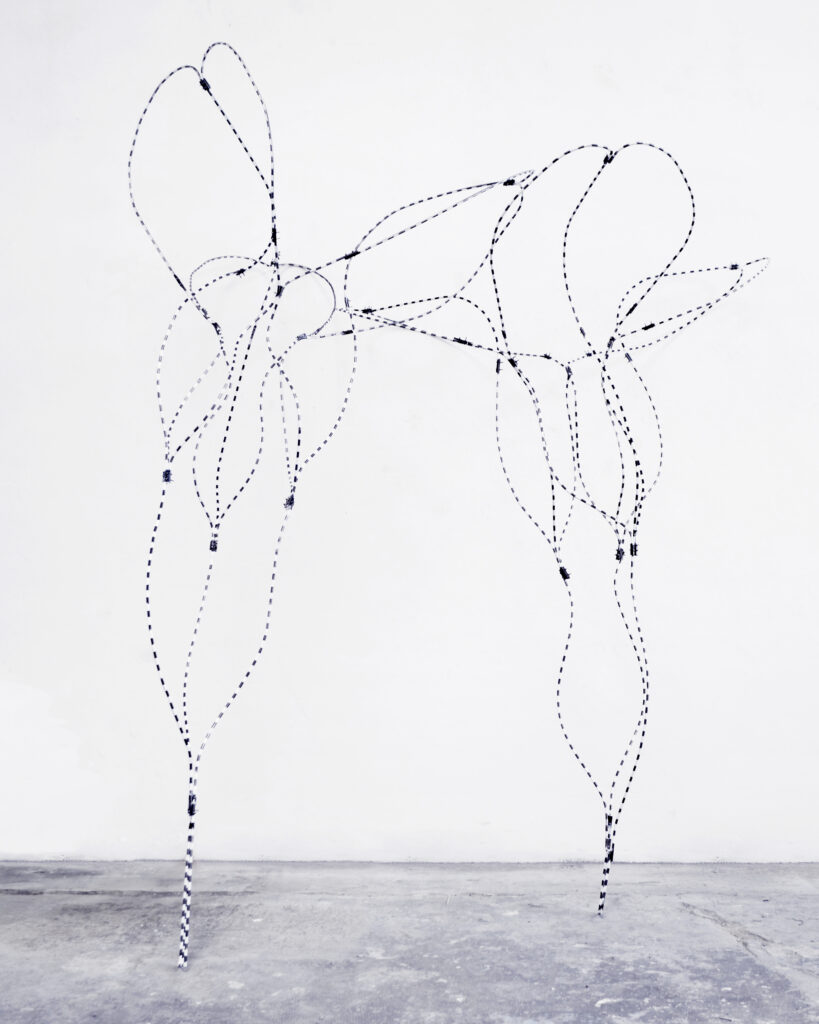
untitled / modular structure 2025
study of plant morphology
iron rods, screws, paint
n°1. cm. 130 x 250 x 130
n°2. cm. 150 x 230 x 150
Bologna
senza titolo / struttura modulare 2025
studio della morfologia delle piante
tondini di ferro, viti, vernice
n°1. cm. 130 x 250 x 130
n°2. cm. 150 x 230 x 150
Bologna
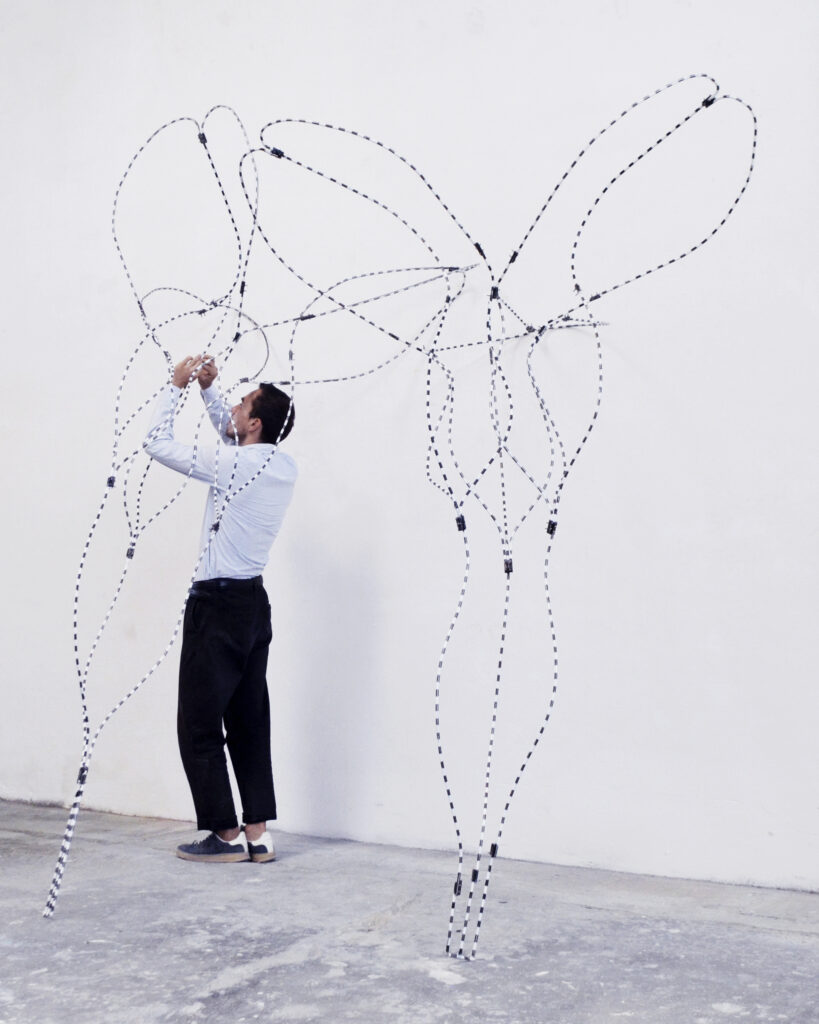
untitled / studio view / modular structure 2025
study of plant morphology
iron rods, screws, paint
n°1. cm. 130 x 250 x 130
n°2. cm. 150 x 230 x 150
Bologna
senza titolo / vista dello studio / struttura modulare 2025
studio della morfologia delle piante
tondini di ferro, viti, vernice
n°1. cm. 130 x 250 x 130
n°2. cm. 150 x 230 x 150
Bologna
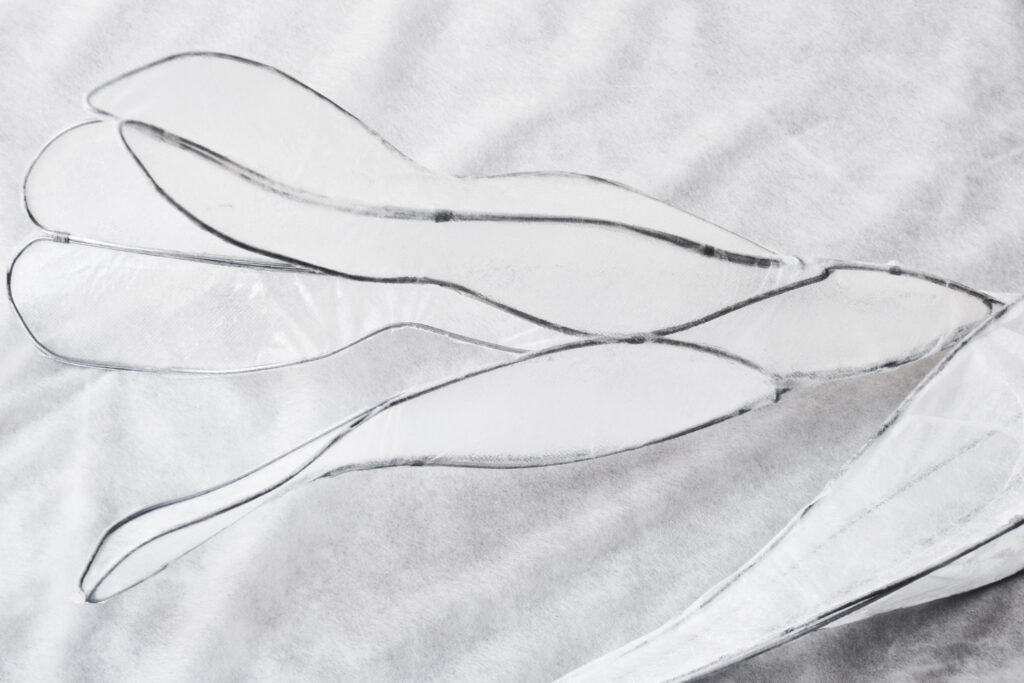
untitled 2025
study of plant morphology
wire, TNT non-woven fabric
cm. 25 x 70 x 25
Bologna
senza titolo 2025
studio della morfologia delle piante
fil di ferro, tessuto TNT
cm. 25 x 70 x 25
Bologna

untitled / petals 2025
iron rods, screws, paint, non-woven fabric
cm. 200 x 200 x 250 Bologna
senza titolo / petali 2025
tondini di ferro, viti, vernice, TNT
cm. 200 x 200 x 250 Bologna

untitled / petals 2025
iron rods, screws, paint, non-woven fabric
cm. 200 x 200 x 250 Bologna
senza titolo / petali 2025
tondini di ferro, viti, vernice, TNT
cm. 200 x 200 x 250 Bologna
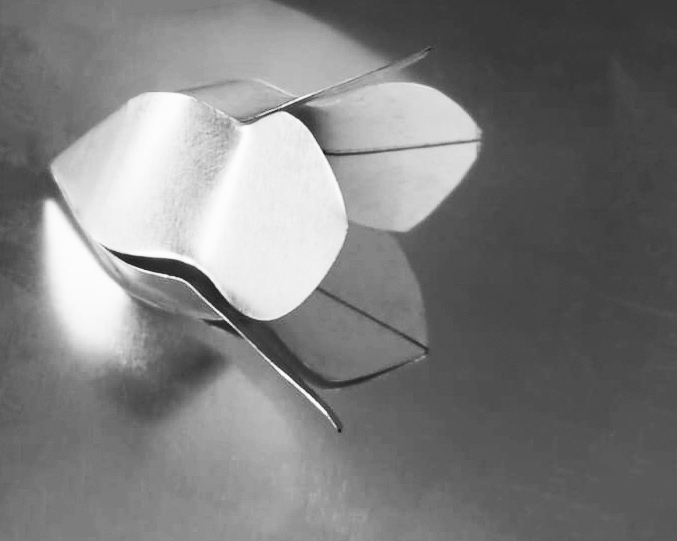
untitled / bellflower 2025
made of bent sheet iron
cm. 2,5 x 2,5 x 5 Budapest
senza titolo / campanula 2025
in lamiera di ferro piegata
cm. 2,5 x 2,5 x 5 Budapest
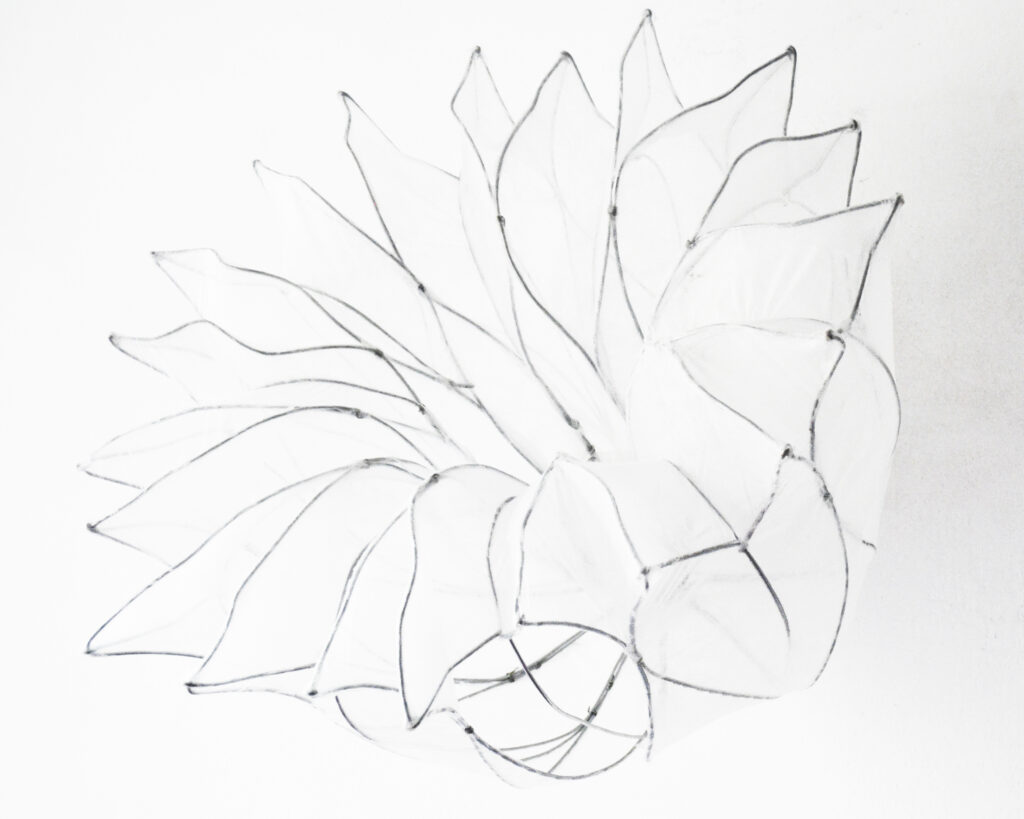
untitled / ornament III. 2025
wire, TNT non-woven fabric
cm. 67 x 42 x 66 Bologna
senza titolo / ornament III. 2025
fil di ferro, tessuto TNT
cm. 67 x 42 x 66 Bologna

reliefs – petals 2025
wire, TNT non-woven, fabric
variable dimension
moduls cm. 50 x 70 ; cm 70 x 70 cm. 50 x 40 ; cm 50 x 50
Bologna
rilievi – petali 2025
fil di ferro, tessuto TNT
dimensione variabile
moduli cm. 50 x 70 ; cm 70 x 70 cm. 50 x 40 ; cm 50 x 50
Bologna
The reliefs that evoke petals are variations of modules, groupings of organic shapes. In these light compositions, I recall Pascali’s forms and Matisse’s collages. Although these basic structures are not covered in colored fabrics, the reflections of the environment color them. They are reliefs dedicated to vitality, play, and lightness.
I rilievi che richiamano i petali sono variazioni di moduli, raggruppamenti di forme organiche. In queste composizioni leggere, rievoco le forme di Pascali e i collage di Matisse. Nonostante queste strutture basiche non siano rivestite di tessuti colorati, i riflessi dell’ambiente le colorano. Sono rilievi dedicati alla vitalità, al gioco e alla leggerezza.

untitled 2025
wire, TNT non-woven fabric
cm. 70 x 70 x 90 Bologna
senza titolo 2025
fil di ferro, tessuto TNT
cm. 70 x 70 x 90 Bologna
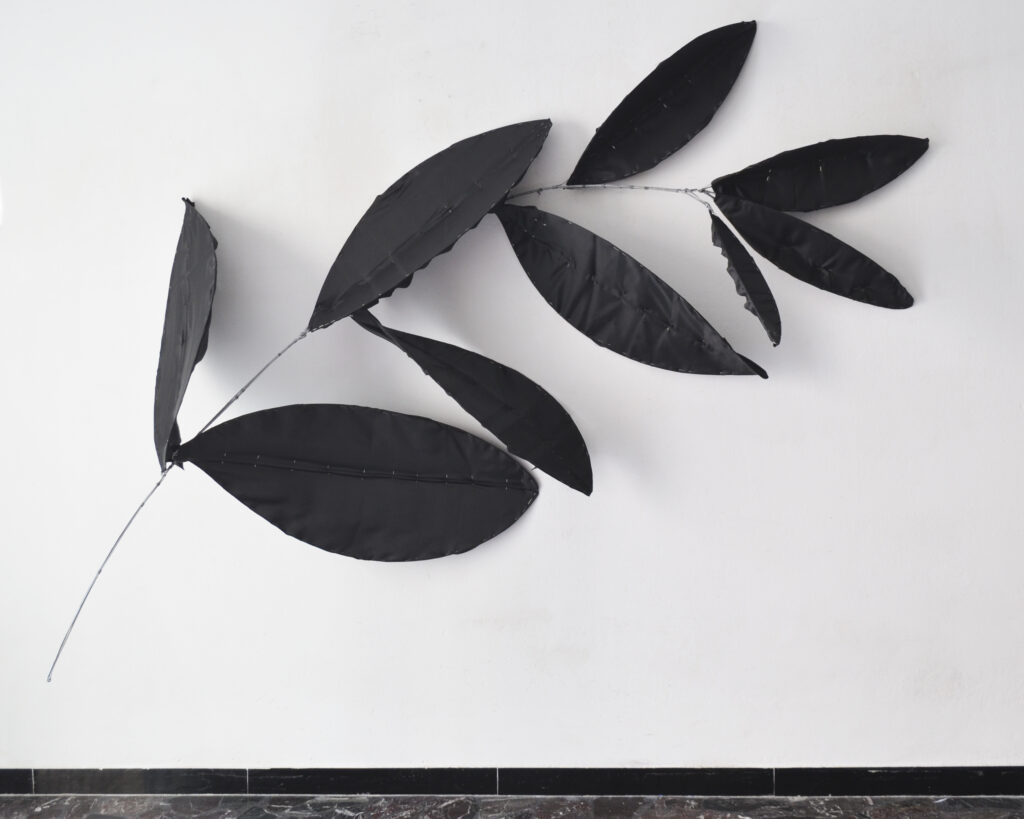
relief – branch 2025
wire, black satin lining
cm. 170 x 60 x 250
Bologna
rilievo – ramo 2025
fil di ferro, raso nero
cm. 170 x 60 x 250
Bologna
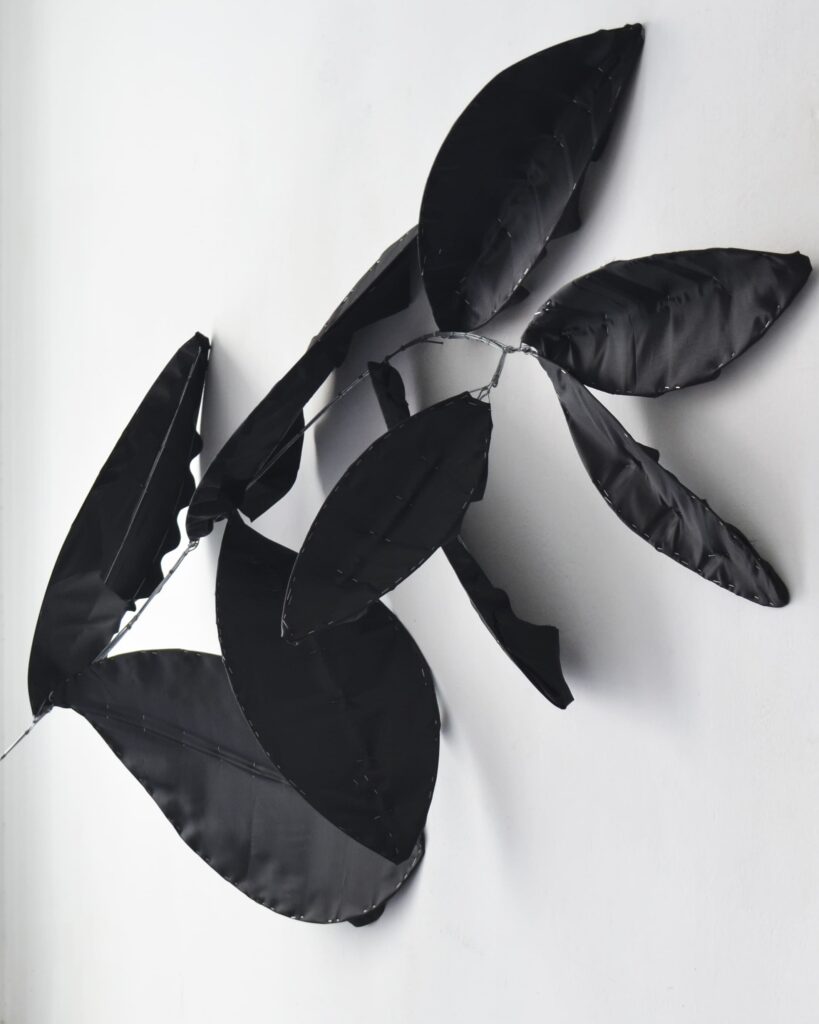
detail
relief – branch 2025
wire, black satin lining
cm. 170 x 60 x 250
Bologna
dettaglio
rilievo – ramo 2025
fil di ferro, raso nero
cm. 170 x 60 x 250
Bologna
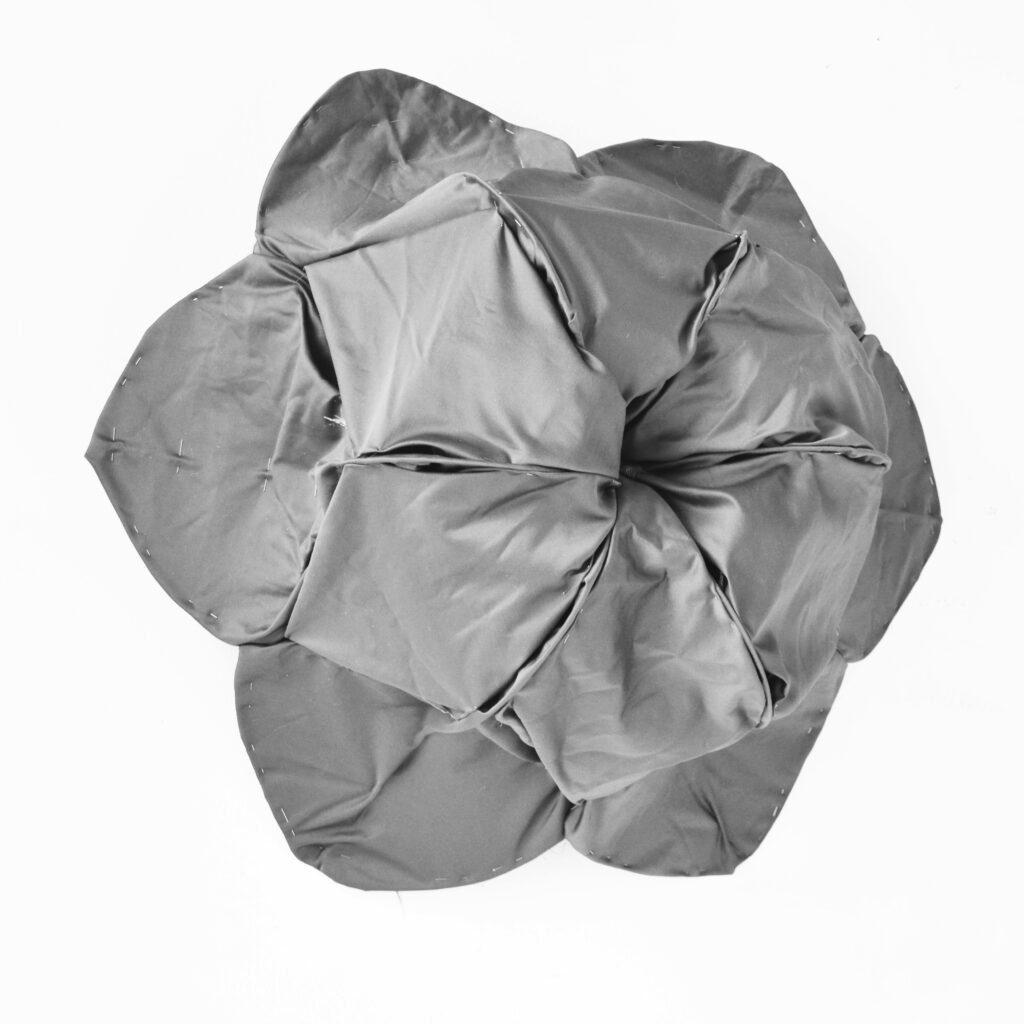
Cushion – Pouf – Relief 2025
cotton, silk
cm. 90 x 50 x 90 Bologna
Cuscino – Pouf – Rilievo 2025
cotone, seta
cm. 90 x 50 x 90 Bologna
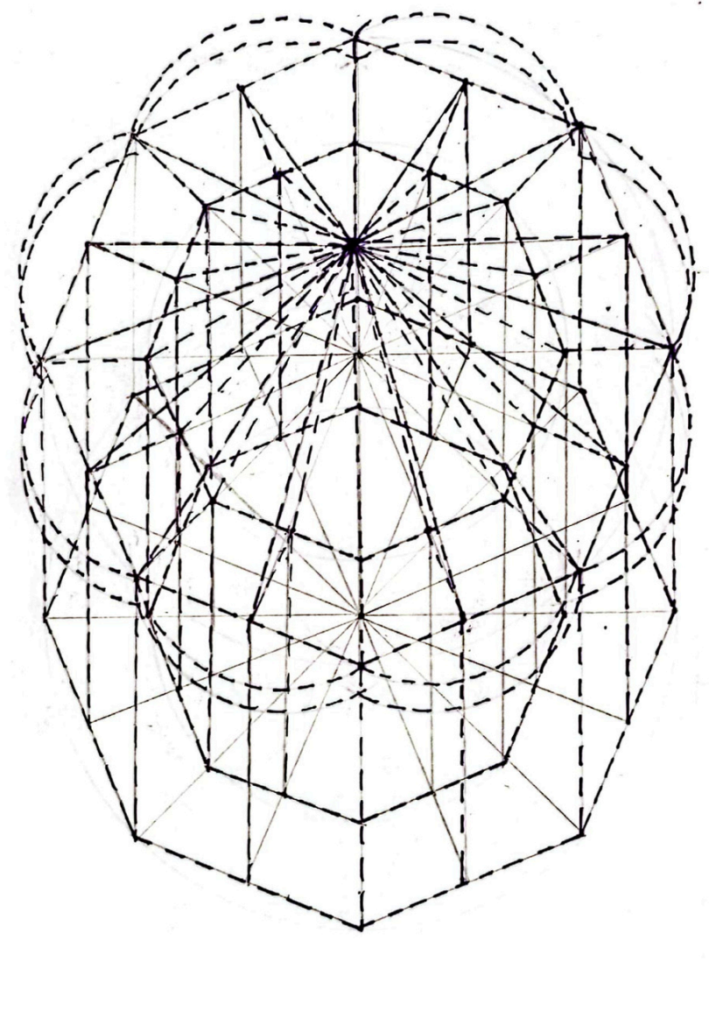
flower store for Fior d’Albenga 2024
drawing, graphite, marker
cm. 21 x 29,7
bottega dei fiori per Fior d’Albenga 2024
disegno, grafite, pennarello
cm. 21 x 29,7
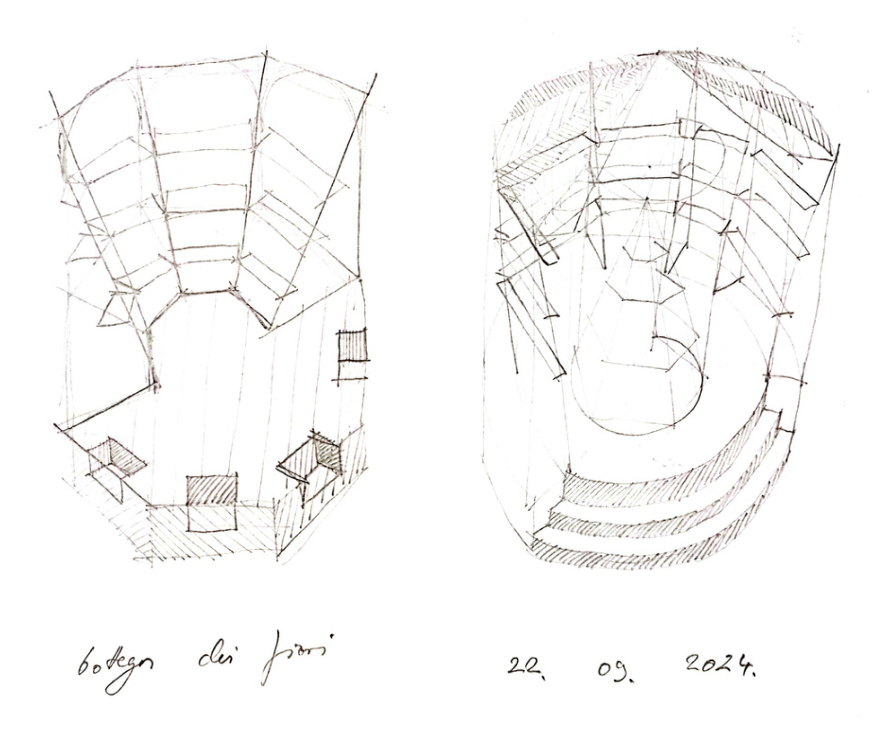
flower store for Fior d’Albenga 2024
drawing, graphite
cm. 21 x 29,7
bottega dei fiori per Fior d’Albenga 2024
disegno, grafite
cm. 21 x 29,7

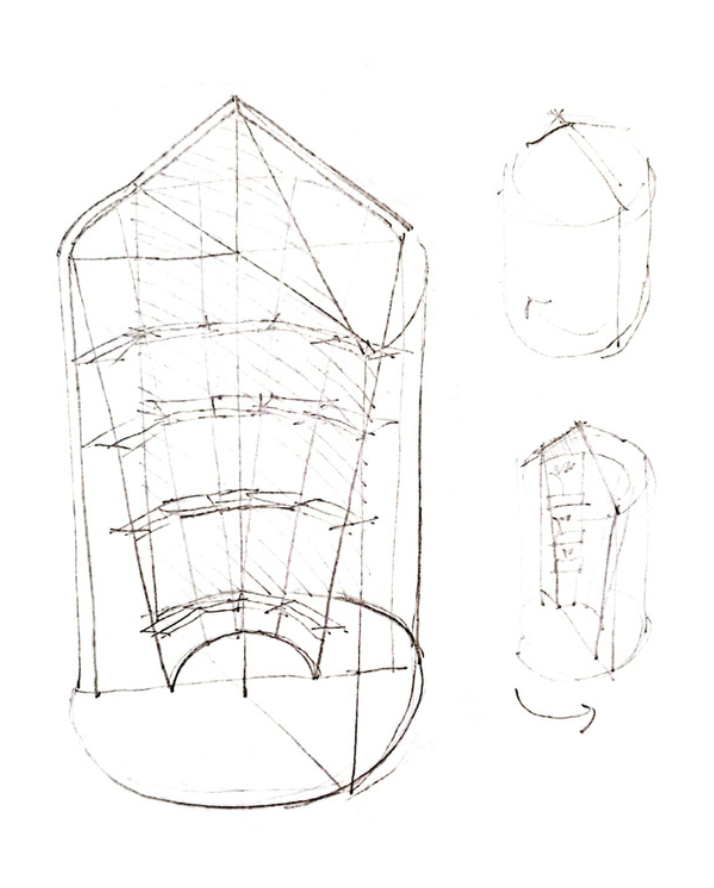
flower store for Fior d’Albenga 2024
drawing, graphite
cm. 21 x 29,7
bottega dei fiori per Fior d’Albenga 2024
disegno, grafite
cm. 21 x 29,7

labyrinth for climber plants 2024
drawing, graphite, marker
cm. 21 x 29,7 Bologna
labirinto per piante rampicanti 2024
disegno, grafite, pennarello
cm. 21 x 29,7 Bologna

labyrinth for climber plants 2024
drawing, graphite
cm. 21 x 29,7 Bologna
labirinto per piante rampicanti 2024
disegno, grafite
cm. 21 x 29,7 Bologna

untitled 2024
gypsum, graphite,
cm. 30 x 12 x 28 Bologna
senza titolo 2024
gesso, grafite,
cm. 30 x 12 x 28 Bologna
A conflicting definition of a point. One splits into two. A composition made of gypsum and graphite oscillates between an overture and a closure, evoking immobility and recalling a scission.
Una definizione conflittuale di un punto. Uno che si divide in due. Uno, molteplice, due. Una composizione in gesso e grafite oscilla tra un’apertura e una chiusura, evocando immobilità e nello stesso tempo ricordando una scissione.

untitled (detail Melencolia I. by Dürer) 2023
gypsum
cm. 29 x 29 x 29 Bologna
senza titolo (dettaglio Melencolia I. di Dürer) 2023
gesso
cm. 29 x 29 x 29 Bologna
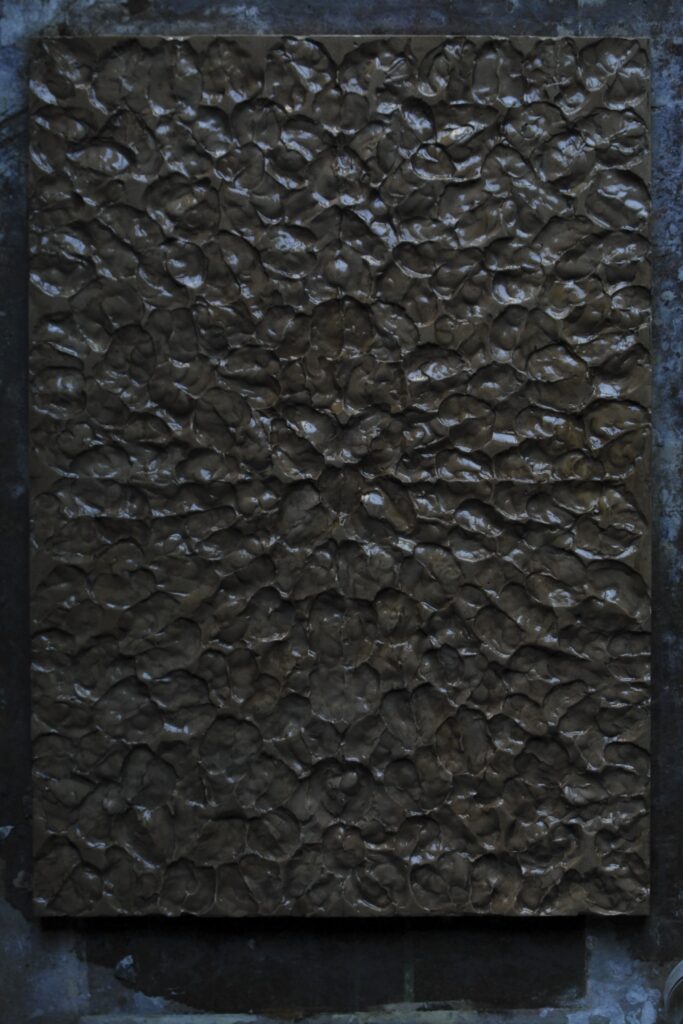
untitled 2023
relief, modelled, ornament, gypsum, patina
cm. 50 x 70 x 2 Bologna
senza titolo 2023
rilievo, modellato, ornamento, gesso, patina
cm. 50 x 70 x 2 Bologna

project for City of Light Jyväskylä 2023
mirror system, reflector
Light Art Residency Finland
progetto per City of Light Jyväskylä 2023
sistema di specchi, riflettore
Light Art Residency Finlandia
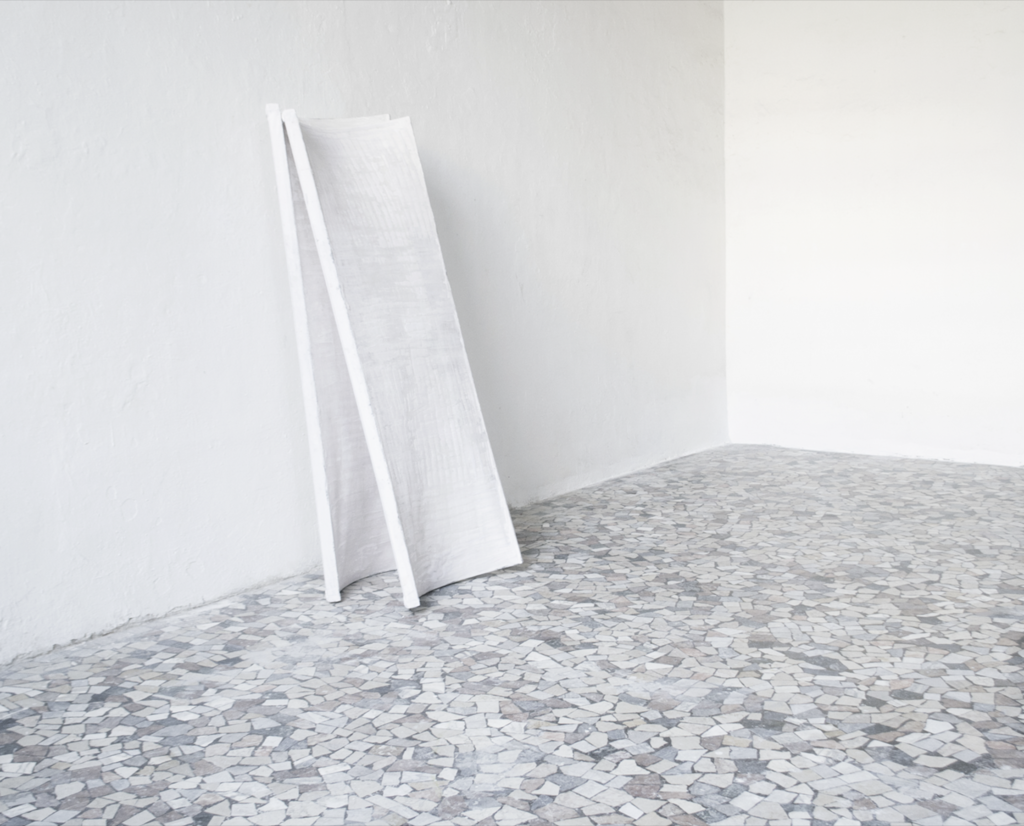
untitled diptych 2023
curved canvas stretcher frame, pigments, priming
no° 1 cm. 80 x 200 x 20; no° 2 cm. 80 x 200 x 20 variable distance Bologna
senza titolo dittico 2023
telaio piegato, pigmenti, imprimitura
no° 1 cm. 80 x 200 x 20; no° 2 cm. 80 x 200 x 20 distanza variabile Bologna
The paintings leaning against the wall evoke a game called “trust game”. It is, in fact, a diptych composed of two paintings that I have partially erased, I have also removed some of the primer, but at the same time, the pigments are still visible in the background. I was intrigued by the relationship between the impersonal and a personal dimension. The gestures of repetition and folding are present in these works, which belong to a series I started in 2022.
I quadri appoggiati alla parete evocano un gioco che viene chiamato “gioco della fiducia”. Si tratta infatti di un dittico composto da due dipinti che ho parzialmente cancellato, rimuovendo in parte anche l’imprimitura, ma allo stesso tempo sul fondo si vedono ancora i pigmenti. Mi incuriosiva questo rapporto tra l’impersonale e una dimensione invece “personale”. I gesti del ripetere e piegare sono presenti in questi lavori, che appartengono ad una serie che ho iniziato nel 2022.
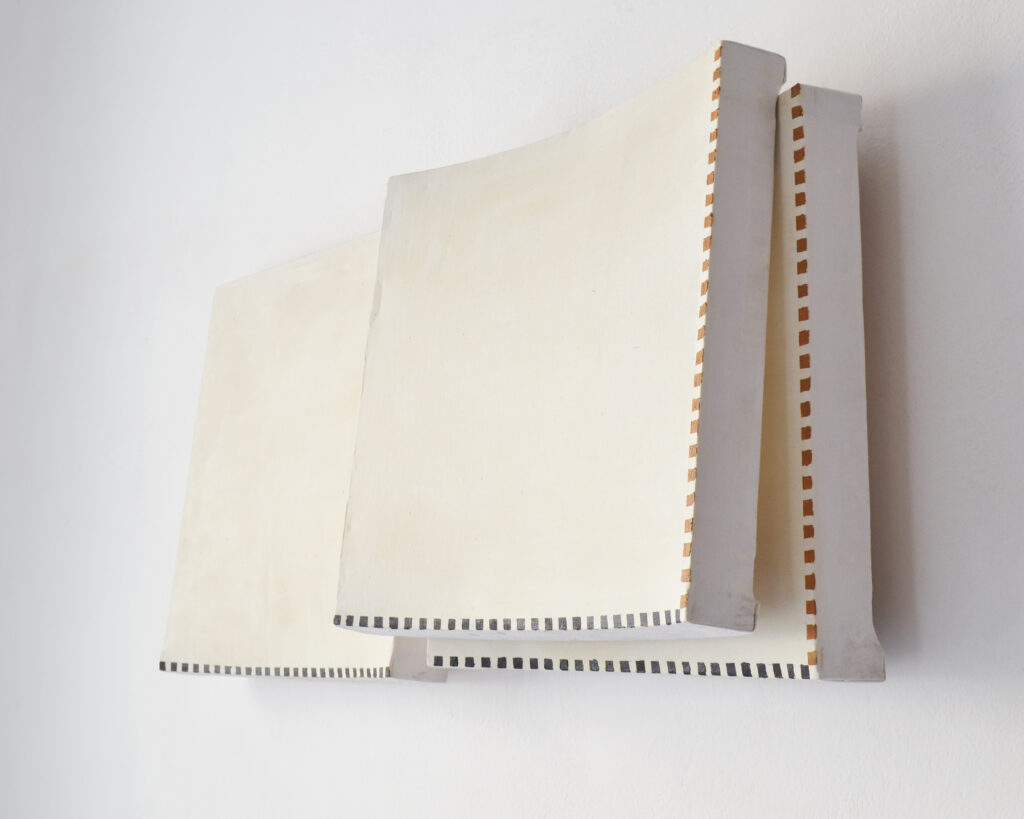
The Private Lives of Trees 2023
curved canvas stretcher frame, oil on canvas
no°1 cm. 10 x 55 x 55
no°2 cm. 10 x 50 x 55
no°3 cm. 10 x 50 x 55
Bologna
La vita privata degli alberi 2023
telaio piegato, olio su tela
no°1 cm. 10 x 55 x 55
no°2 cm. 10 x 50 x 55
no°3 cm. 10 x 50 x 55
Bologna

untitled 2023
curved canvas stretcher frame, faux leather
cm. 88 x 189 x 9 Bologna
senza titolo 2023
telaio piegato, ecopelle
cm. 88 x 189 x 9 Bologna
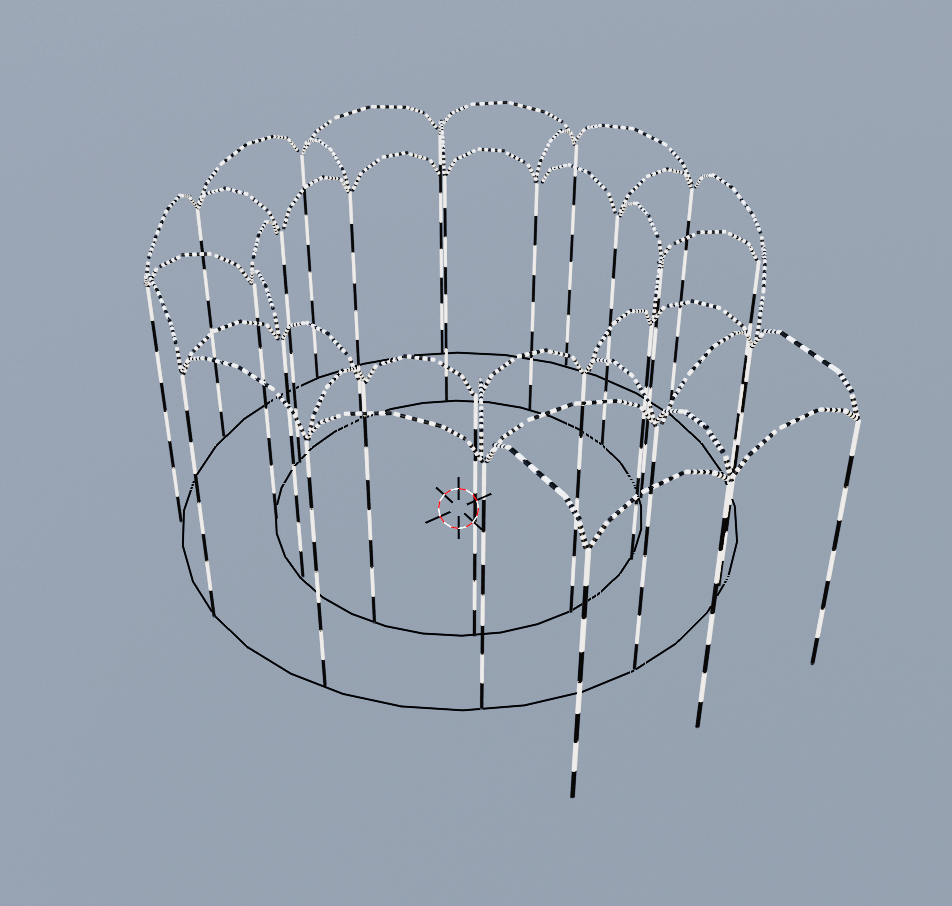
sculpture park project in Diano Marina 2023
tubolare system
progetto per il parco sculture a Diano Marina 2023
sistema di tubolari
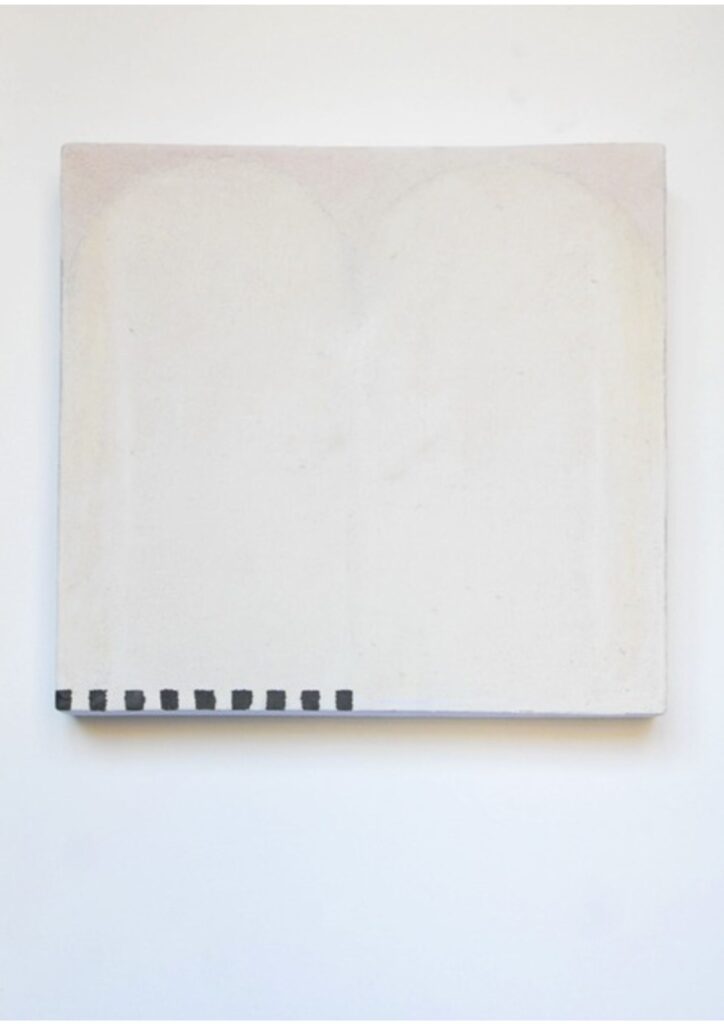
untitled 2023
canvas stretcher frame priming, cement, pigments
cm. 30 x 30 x 10 Bologna
senza titolo 2023
telaio, imprimitura, cemento, pigmenti
cm. 30 x 30 x 10 Bologna
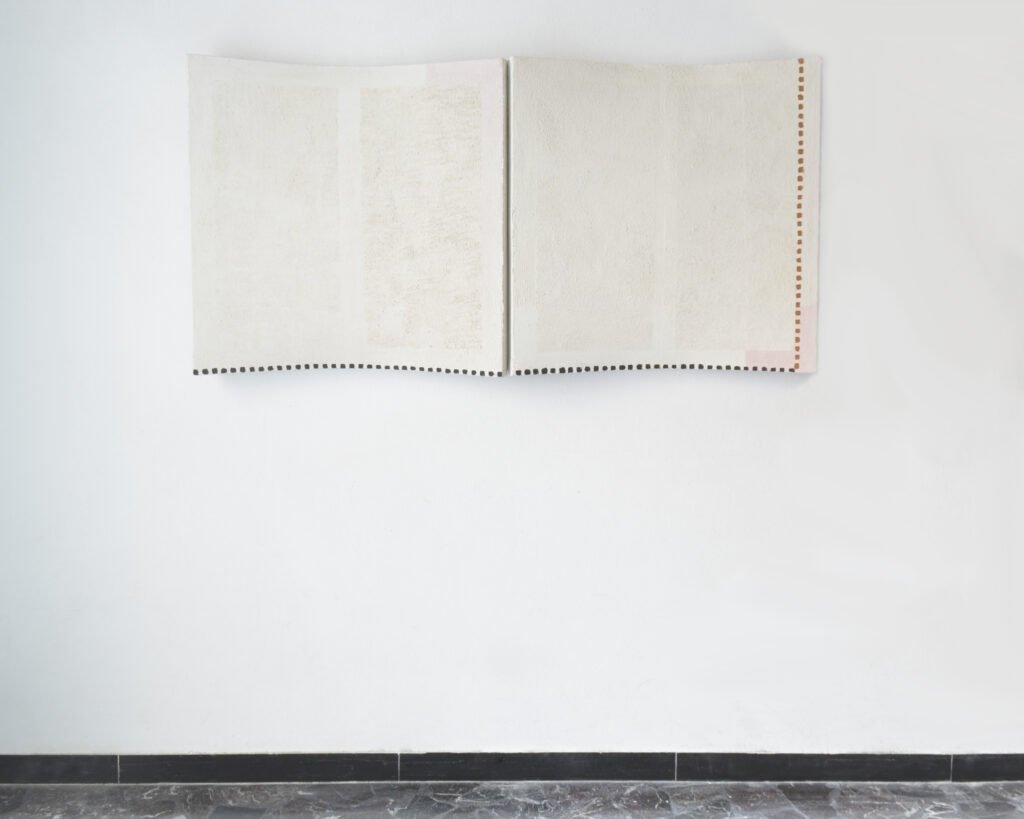
untitled diptych 2023
curved canvas stretcher frame, cement, pigments, priming
no° 1 cm. 70 x 70 x 10
no° 2 cm. 70 x 70 x 10
variable distance Bologna
senza titolo dittico 2023
telaio piegato, cemento, pigmenti, imprimitura
no° 1 cm. 70 x 70 x 10
no° 2 cm. 70 x 70 x 10
distanza variabile Bologna

untitled diptych 2023
curved canvas stretcher frame, cement, pigments, priming
no° 1 cm. 30 x 100 x 10
no° 2 cm. 30 x 100 x 10
variable distance Bologna
senza titolo dittico 2023
senza titolo dittico 2023 telaio piegato, cemento, pigmenti, imprimitura
no° 1 cm. 30 x 100 x 10
no° 2 cm. 30 x 100 x 10
distanza variabile Bologna
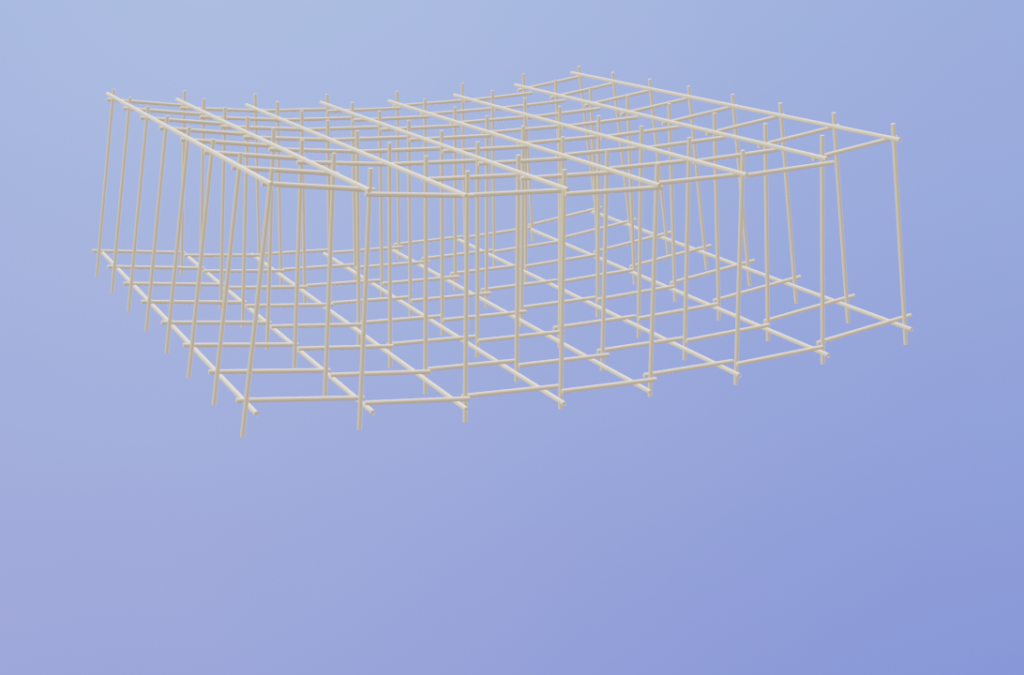
sculpture park project in Diano Marina 2023
scaffolding structure
progetto per il parco sculture a Diano Marina 2023
struttura di ponteggi
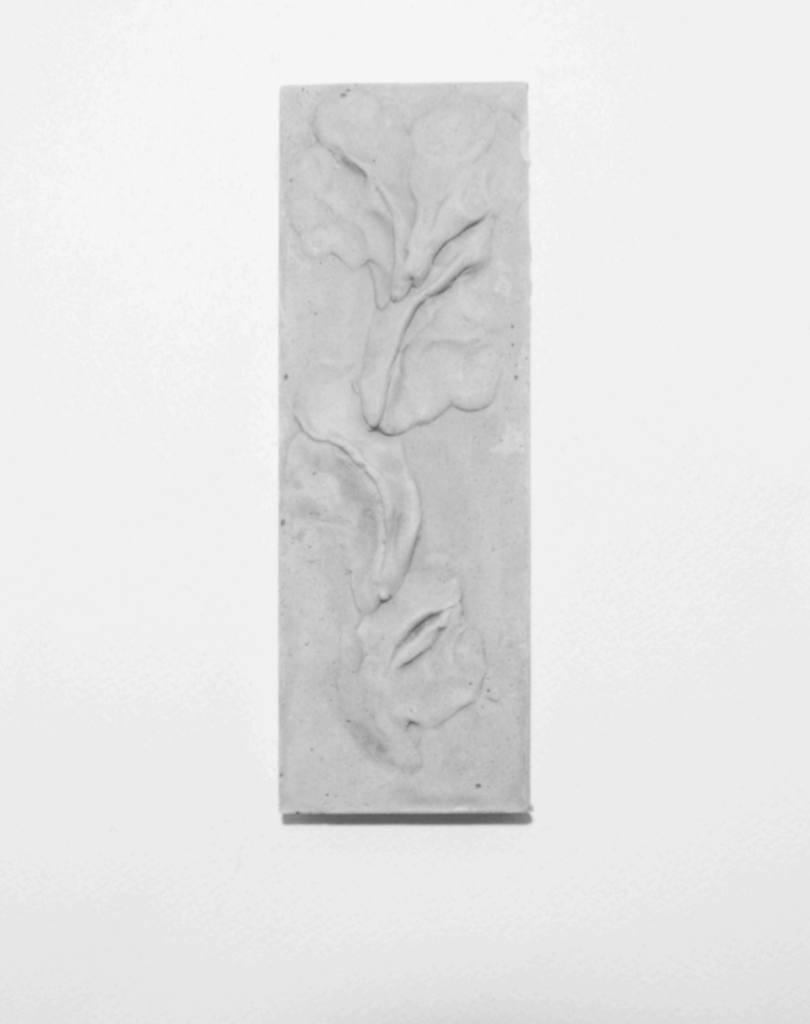
untitled 2023
relief, modelled, flourish ornament, gypsum
cm. 5 x 14 x 1 Bologna
senza titolo 2023
rilievo, modellato, ornamento floreale, gesso
cm. 5 x 14 x 1 Bologna
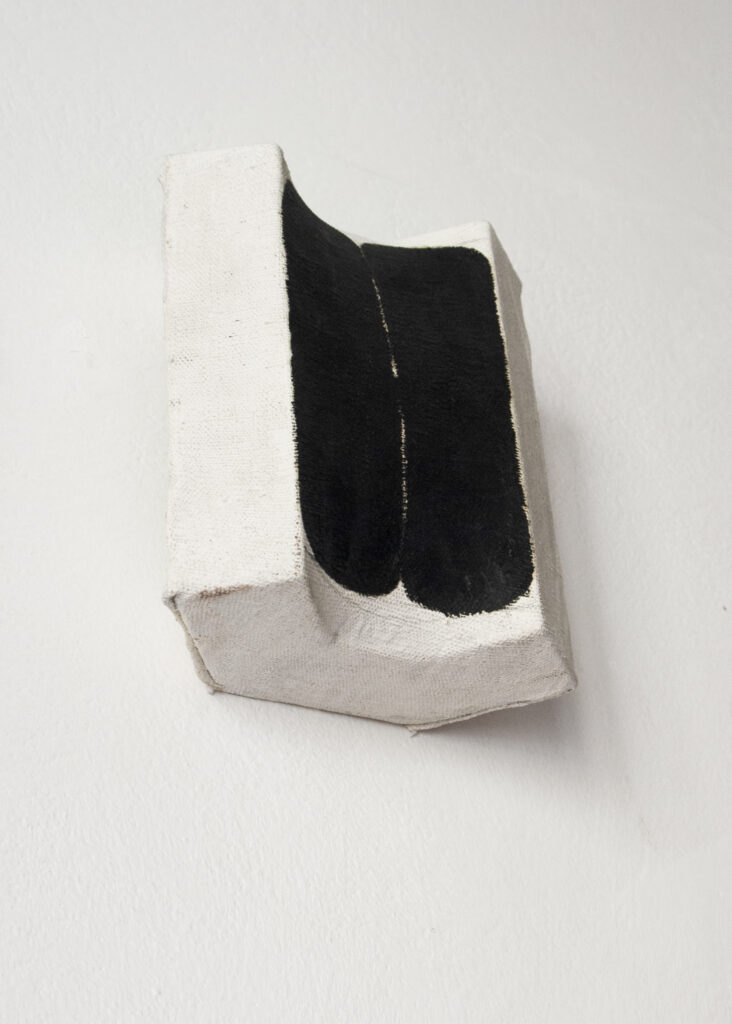
untitled 2022
curved canvas stretcher frame oil on canvas
cm. 24 x 20 x 9 Bologna
senza titolo 2022
telaio piegato olio su tela
cm. 24 x 20 x 9 Bologna

untitled 2022
gypsum
n°1 cm. 8 x 3 x 8
n°2 cm. 8 x 3 x 9
Bologna
senza titolo 2022
gesso
n°1 cm. 8 x 3 x 8
n°2 cm. 8 x 3 x 9
Bologna
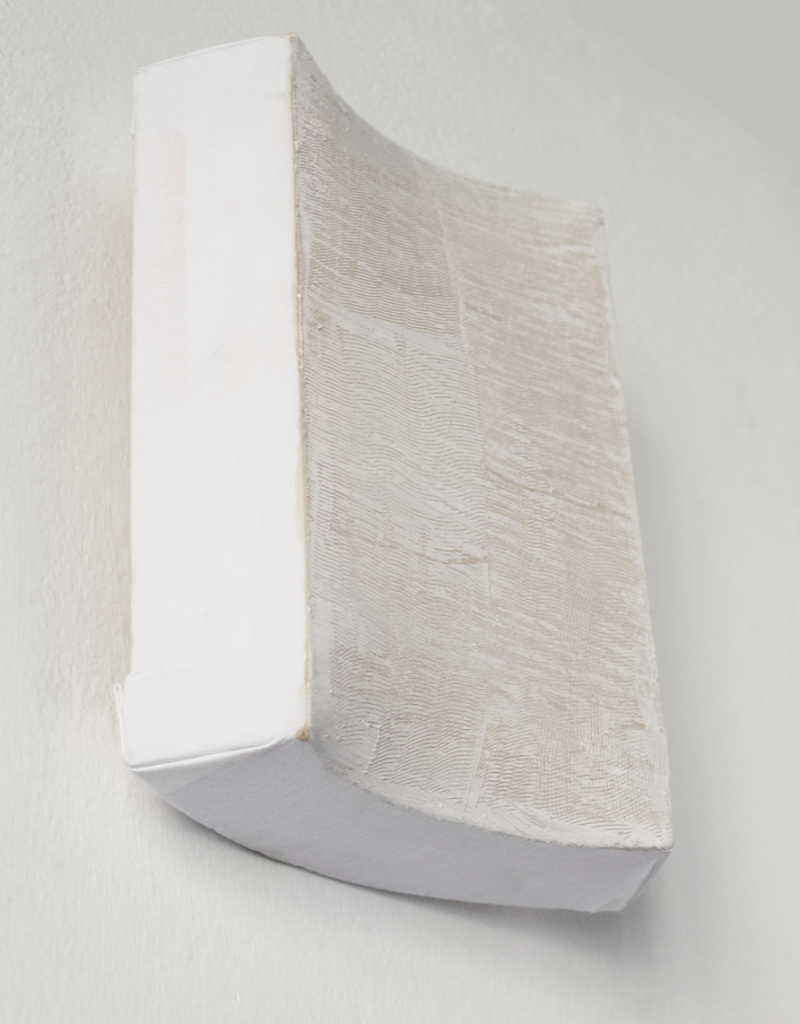
Desert Dance 2023
curved canvas stretcher frame oil on canvas
cm. 25 x 21 x 8 Bologna
Danza del deserto 2023
telaio piegato olio su tela
cm. 25 x 21 x 8 Bologna
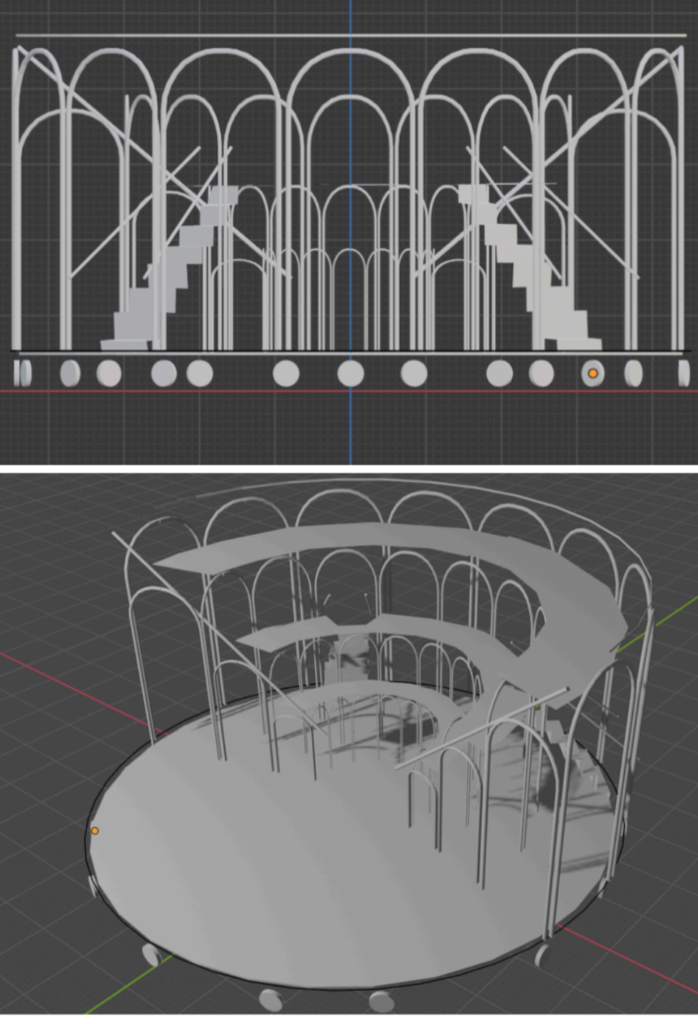
revolving theatre /
sculpture park project in Diano Marina 2023
scaffolding structure
teatro girevole /
progetto, parco sculture a Diano Marina 2023
struttara di ponteggi

revolving theatre /
sculpture park project in Diano Marina 2023
scaffolding structure
teatro girevole /
progetto, parco sculture a Diano Marina 2023
struttara di ponteggi
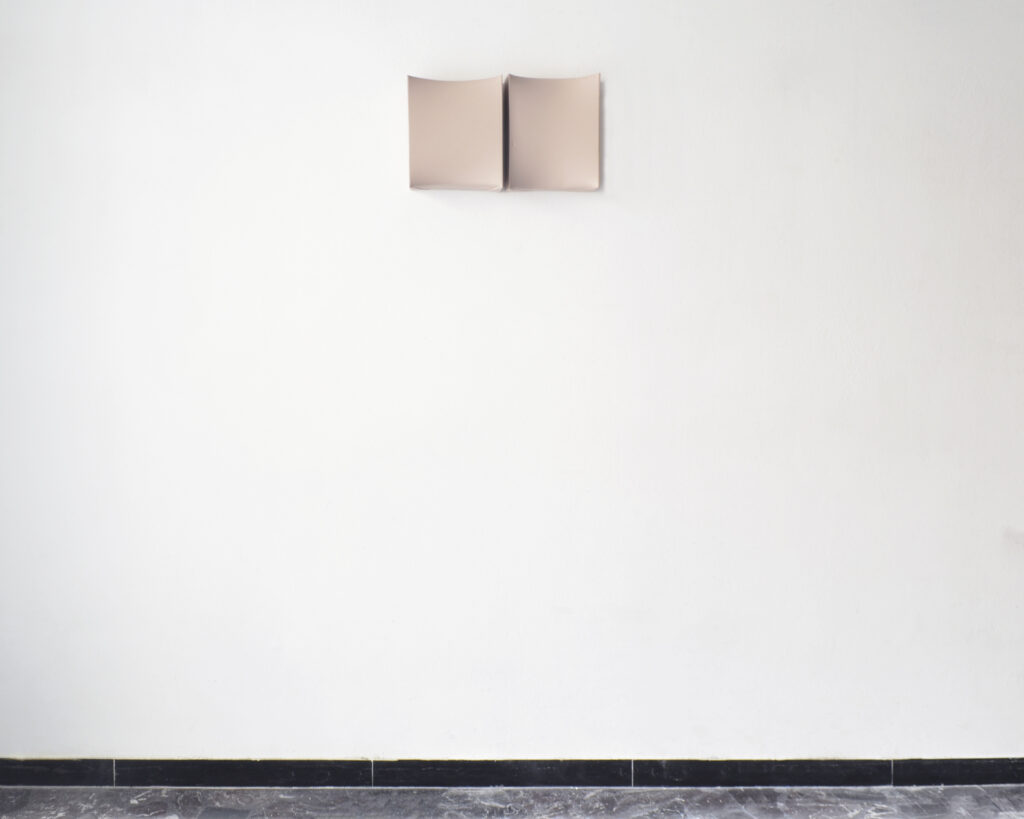
untitled diptych 2022
curved canvas stretcher frame faux leather
no° 1 cm. 22 x 26,5
no° 2 cm. 21 x 28
variable distance Bologna
senza titolo dittico 2022
telaio piegato, ecopelle
no° 1 cm. 22 x 26,5
no° 2 cm. 21 x 28
distanza variabile Bologna
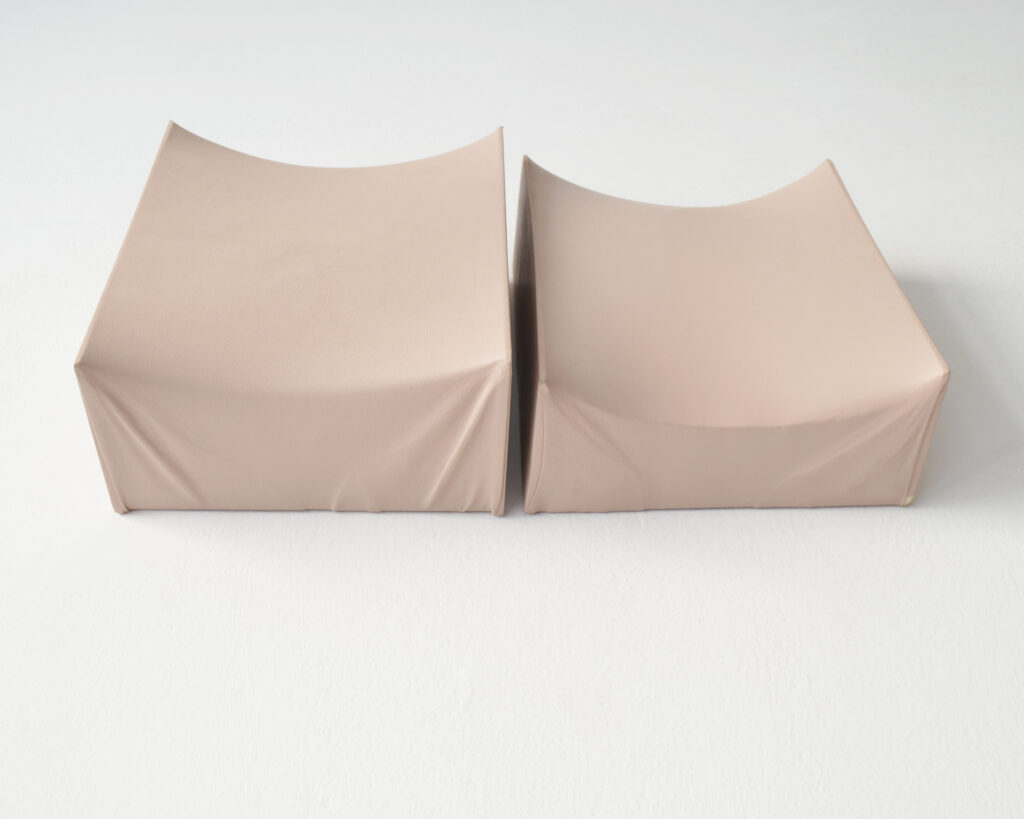
untitled diptych 2022
curved canvas stretcher frame faux leather
no° 1 cm. 22 x 26,5
no° 2 cm. 21 x 28
variable distance Bologna
senza titolo dittico 2022
telaio piegato, ecopelle
no° 1 cm. 22 x 26,5
no° 2 cm. 21 x 28
distanza variabile Bologna
Negative reliefs, object-paintings, tiles that reconstruct a fragmented whole. The intrinsic space, often called leak (fuga), opens up the possibility of a continuous definition of distance. Whenever the reliefs are moved, new proximities are discovered.
Rilievi-negativi, oggetti-quadri, tasselli che ricostruiscono un insieme frammentato. Lo spazio intrinseco, spesso chiamato fuga, apre la possibilità ad una continua definizione di distanza. Qualvolta i rilievi vengono spostati si scoprono nuove prossimità.

Alphabet Studies 2022
Baryta photo paper
cm. 15 x 19
installation: curved iron rode glass plates
cm. 200 x 160 x 400
Bologna
Studio di alfabeto 2022
carta fotografica – carta baritata
cm. 15 x 19
installazione: tondini di acciaio piegati, lastre di vetro
cm. 200 x 160 x 400
Bologna
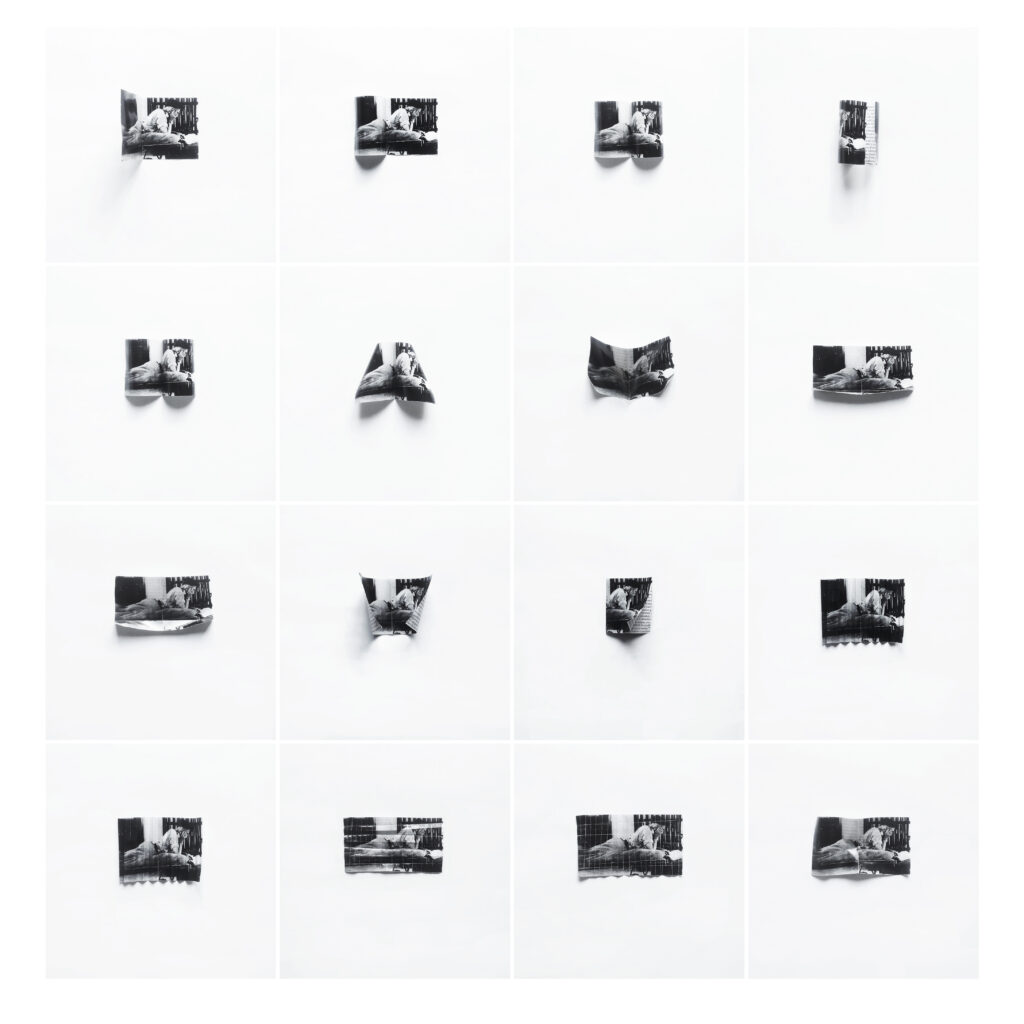
Melancholy 2022
paper print series
cm. 50 x 50 Bologna
Malinconia 2022
serie stampe su carta
cm. 50 x 50 Bologna

Melancholy 2022
relief, paper
detail National Geographic magazine
cm. 7 x 7 x 4 Bologna
Malinconia 2022
rilievo, carta
dettaglio rivista National Geographic
cm. 7 x 7 x 4 Bologna

bells / wax model / bells for sister cities 2021-2022
Kovács Mihály Mór & Tommaso Silvestroni
cm. 15 x 17 x 25
photography: Berta Aguilar
Bologna
campane /modelli in cera / campane per città gemellate 2021-2022
Kovács Mihály Mór & Tommaso Silvestroni
cm. 15 x 17 x 25
fotografia: Berta Aguilar
Bologna
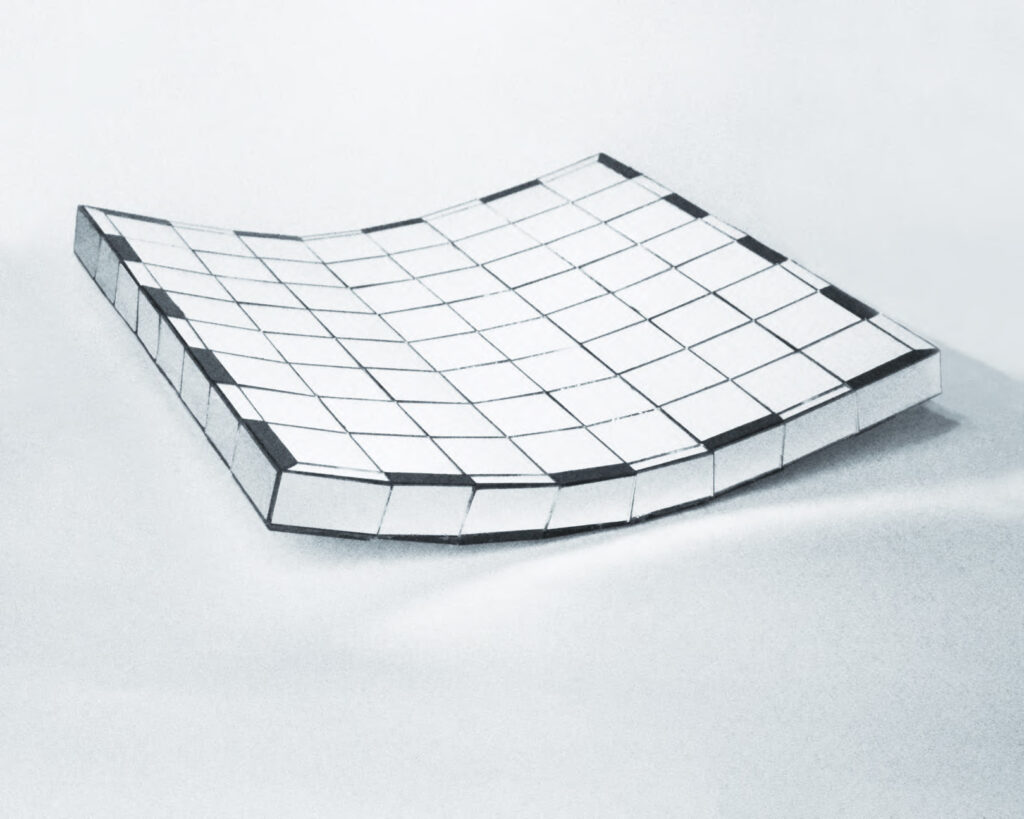
Map 2021
mirrors, silicone, wood
cm. 42 x 8 x 42
Bologna
Mappa 2021
specchi, silicone, legno
cm. 42 x 8 x 42
Bologna
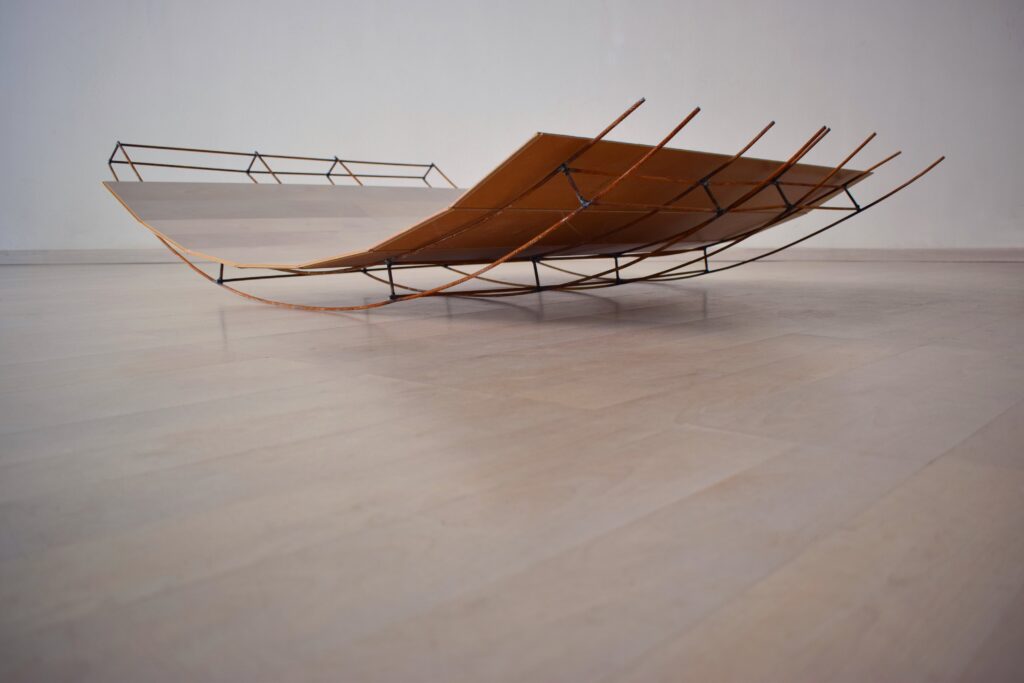
42/a D’Azeglio Street 2019
curved iron rods, HDF varnished
cm. 165 x 35 x 110
Gallery L’Ariete artecontemporanea Bologna
Via D’Azeglio 42/a 2019
tondini di acciaio piegati, HDF verniciato
cm. 165 x 35 x 110
Galleria L’Ariete artecontemporanea Bologna
‘Via D’Azeglio 42/a’ A site-specific project that involves the ‘taking’ of a part of the gallery floor, which becomes sculpture, fragment of a whole, from where it still emerges as a significant formal singularity. The Gallery is the dwelling of images, dwelling of art. Mihály Mór Kovács thus continues, with a sculpture that proposes itself, also, as a sketch for other larger realizations, his own discourse on the architecture of dwelling and the morphological possibilities of its materials.
text by Eleonora Frattarolo
‘Via D’Azeglio 42/a’ Progetto site specific che comprende il ‘prelievo’ di una parte del pavimento della Galleria, che diviene scultura, frammento di un tutto, da cui tuttavia essa emerge in quanto significativa singolarità formale. La Galleria è abitazione delle immagini, abitazione dell’arte. Mihály Mór Kovács continua così, con una scultura che si propone, anche, di essere bozzetto per
altre, più vaste realizzazioni, un suo discorso sull’architettura dell’abitare e sulle possibilità morfologiche dei suoi materiali.
testo di Eleonora Frattarolo

42/a D’Azeglio Street 2019
curved iron rods, HDF varnished
cm. 165 x 35 x 110
Gallery L’Ariete artecontemporanea Bologna
Via D’Azeglio 42/a 2019
tondini di acciaio piegati, HDF verniciato
cm. 165 x 35 x 110
Galleria L’Ariete artecontemporanea Bologna
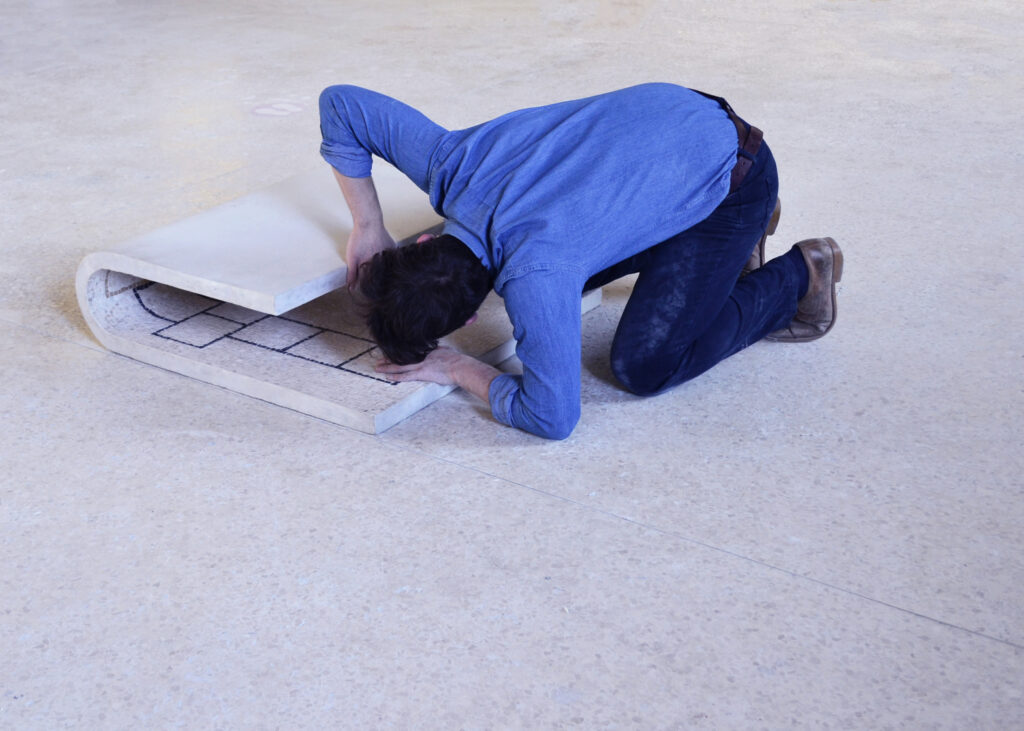
Hopscotch 2019
mosaic, limestone, black marble, metal structure
C2FTE S2 elastorapid
cm. 80 x 20 x 150
Fondazione Zucchelli Bologna
Gioco della campana 2019
mosaico, pietra calcarea, marmo nero, struttura di metallo
C2FTE S2 elastorapid
cm. 80 x 20 x 150
Fondazione Zucchelli Bologna
The artwork appears introverted and poised between figuration and plasticity. The curvature distinctly defines an interior and an exterior. The exterior is smooth and neutral, while the interior is rough and textured like a mosaic. It is almost like an “archeological fragment” preserved within the shell of contemporaneity.
text by Romano Schnabl
L’opera appare introversa e in bilico tra figurazione e plasticità. La curvatura definisce nettamente un interno ed un esterno. Liscio e neutro l’esterno; scabroso nel ruvido mosaico all’interno. Quasi un “frammento archeologico” custodito nel guscio della contemporaneità’.
testo di Romano Schnabl
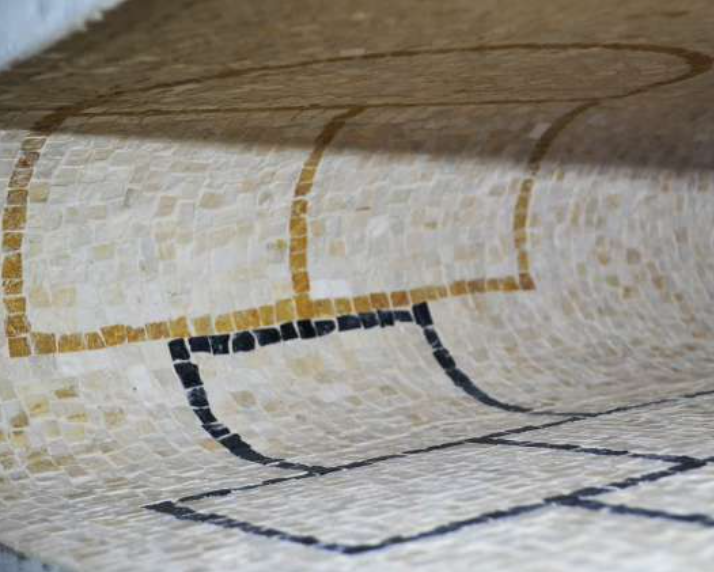
detail
Hopscotch 2019
mosaic, limestone, black marble, metal structure
C2FTE S2 elastorapid
cm. 80 x 20 x 150
Fondazione Zucchelli Bologna
dettaglio
Gioco della campana 2019
mosaico, pietra calcarea, marmo nero, struttura di metallo
C2FTE S2 elastorapid
cm. 80 x 20 x 150
Fondazione Zucchelli Bologna

A Little Night Music / Eine kleine Nachtmusik / paper print series 2019
Installation Gallery L’Ariete artecontemporanea
cm. 14,8 x 21 Bologna
Piccola Serenata Notturna / Eine kleine Nachtmusik / serie stampe su carta 2019
Installazione Galleria L’Ariete artecontemporanea
cm. 14,8 x 21 Bologna
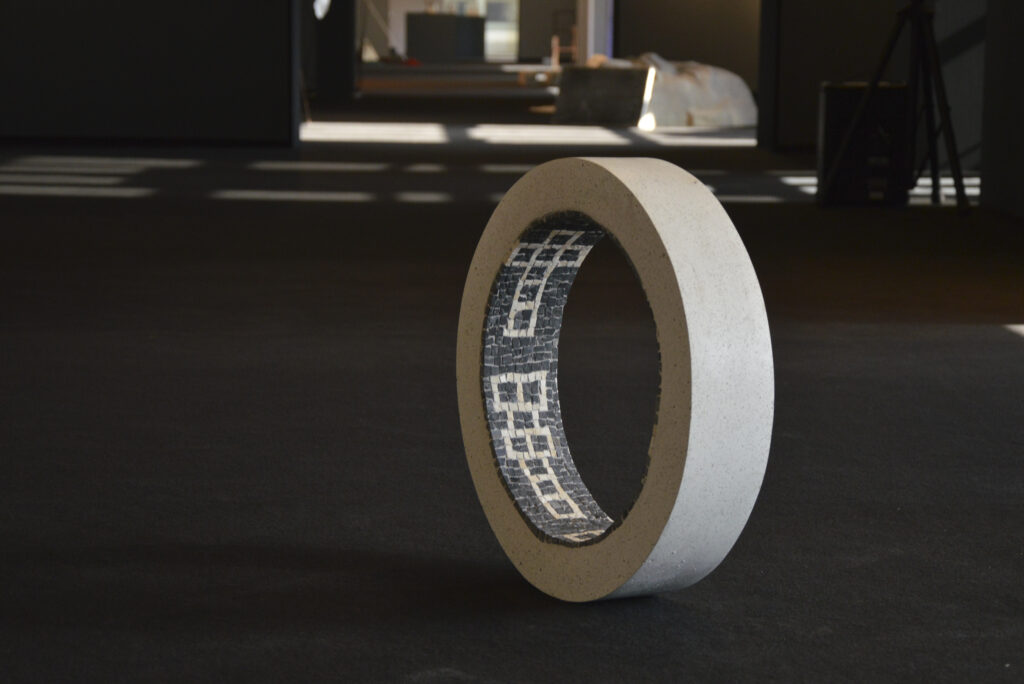
GPS 2019
mosaic, limestone, black marble C2FTE S2 elastorapid, metal structure
cm. 10 x 50 x 50
Biennale of Young Artists Monza
GPS 2019
mosaico di pietra calcarea, marmo nero C2FTE S2 elastorapid, struttura di ferro
cm. 10 x 50 x 50
Biennale Giovani Monza

folded paintings detail of the exhibition Prologo 2018
Museum of Modern Art Ugo Carà Muggia (TS)
dipinti piegati dettaglio della mostra Prologo 2018
Museo d’Arte Moderna Ugo Carà Muggia (TS)
In the works that are part of the series of folded paintings (dipinti introversi), my interest is focused on the wall that hosts the works. Usually, we need some distance to look at a painting or a picture, while in this case the attention is focused on this reciprocal hospitality between the painting and the wall. Thus, a dialogue is created in this narrow space encompassed by the object-painting, which invites us to approach it. All of this arises from a sort of hesitation as I am intrigued by this strange relationship between host and guest.
Nei lavori che fanno parte della serie di dipinti piegati (introversi) il mio interesse è rivolto alla parete che ospita i lavori. Di solito abbiamo bisogno di una certa distanza per guardare un dipinto o un quadro mentre in questo caso l’attenzione si concentra su questa ospitalità reciproca tra il quadro e il muro. Si crea così un dialogo in questo spazio stretto inglobato dell’oggetto-quadro, che invita ad avvicinarsi. Tutto questo nasce da una sorta di esitazione in quanto mi incuriosisce questo strano rapporto tra ospite e ospitante.
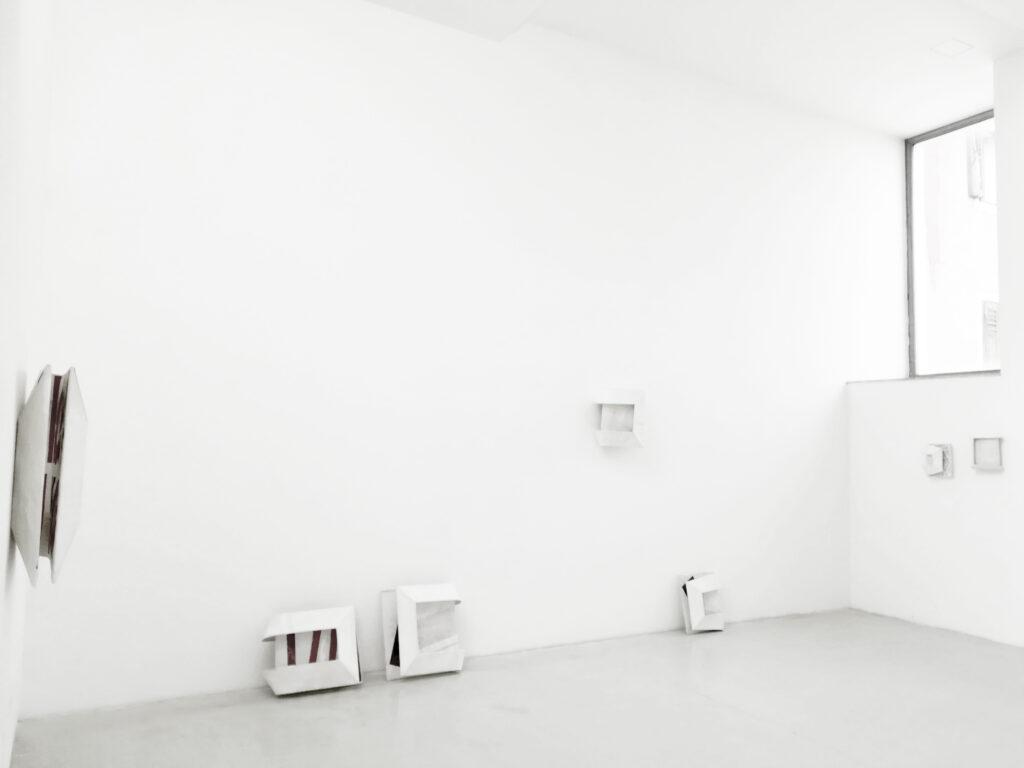
folded paintings detail of the exhibition Prologo 2018
Museum of Modern Art Ugo Carà Muggia (TS)
dipinti piegati dettaglio della mostra Prologo 2018
Museo d’Arte Moderna Ugo Carà Muggia (TS)
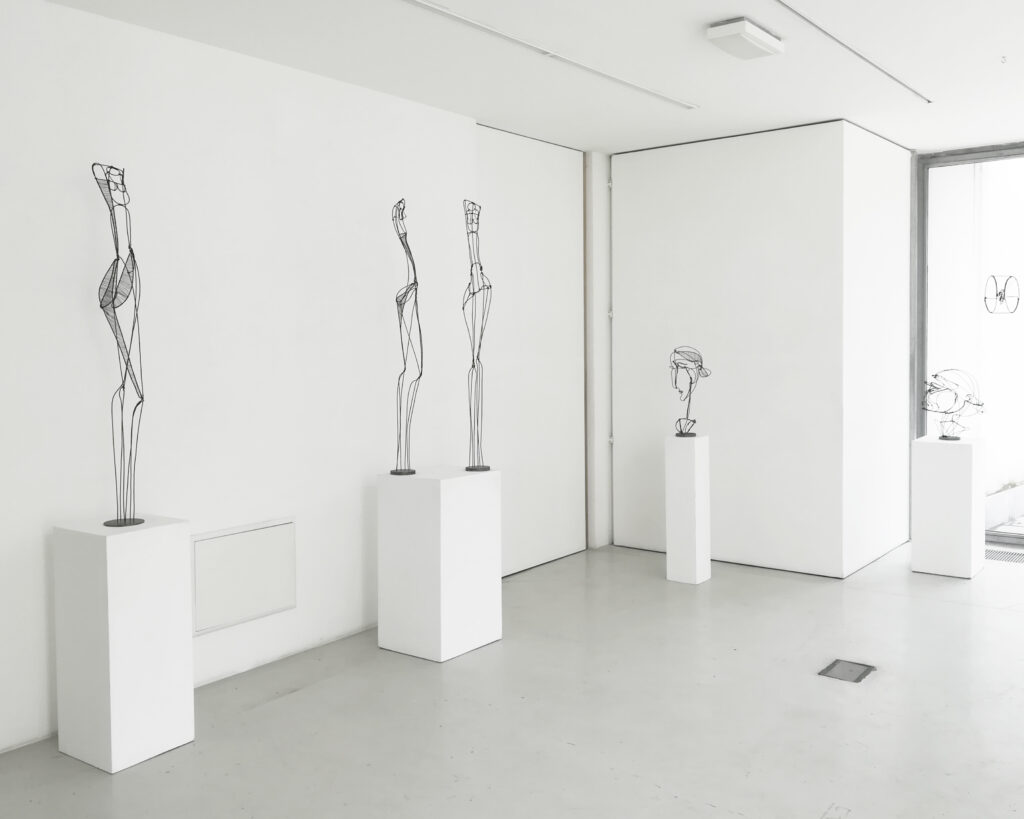
wire sculptures
detail of the exhibition Prologo 2018
Museum of Modern Art Ugo Carà Muggia (TS)
sculture di fil di ferro
dettaglio della mostra Prologo 2018
Museo d’Arte Moderna Ugo Carà Muggia (TS)
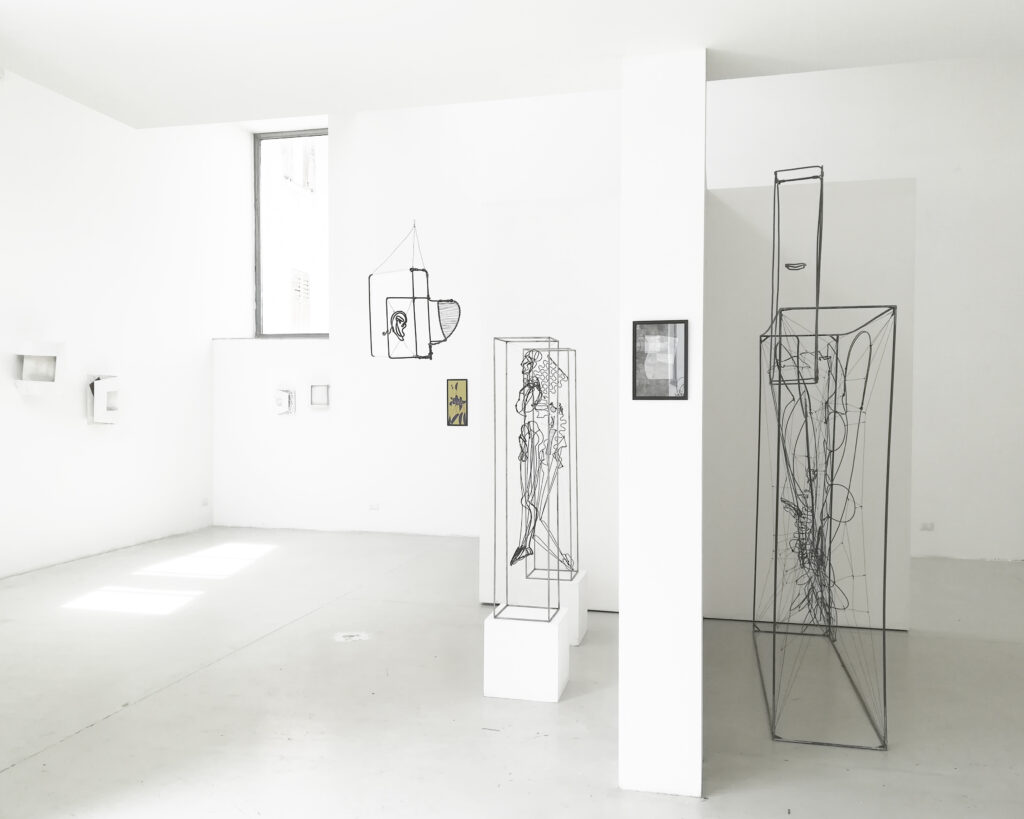
wire sculptures
detail of the exhibition Prologo 2018
Museum of Modern Art Ugo Carà Muggia (TS)
sculture di fil di ferro
dettaglio della mostra Prologo 2018
Museo d’Arte Moderna Ugo Carà Muggia (TS)
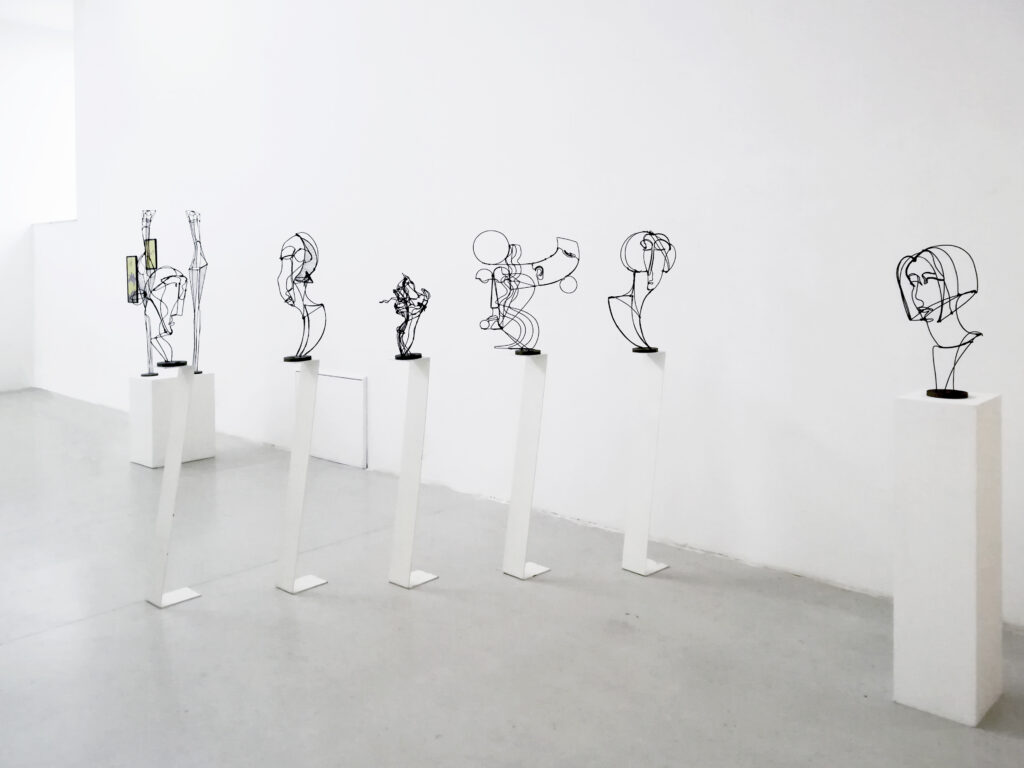
wire sculptures
detail of the exhibition Prologo 2018
Museum of Modern Art Ugo Carà Muggia (TS)
sculture di fil di ferro
dettaglio della mostra Prologo 2018
Museo d’Arte Moderna Ugo Carà Muggia (TS)
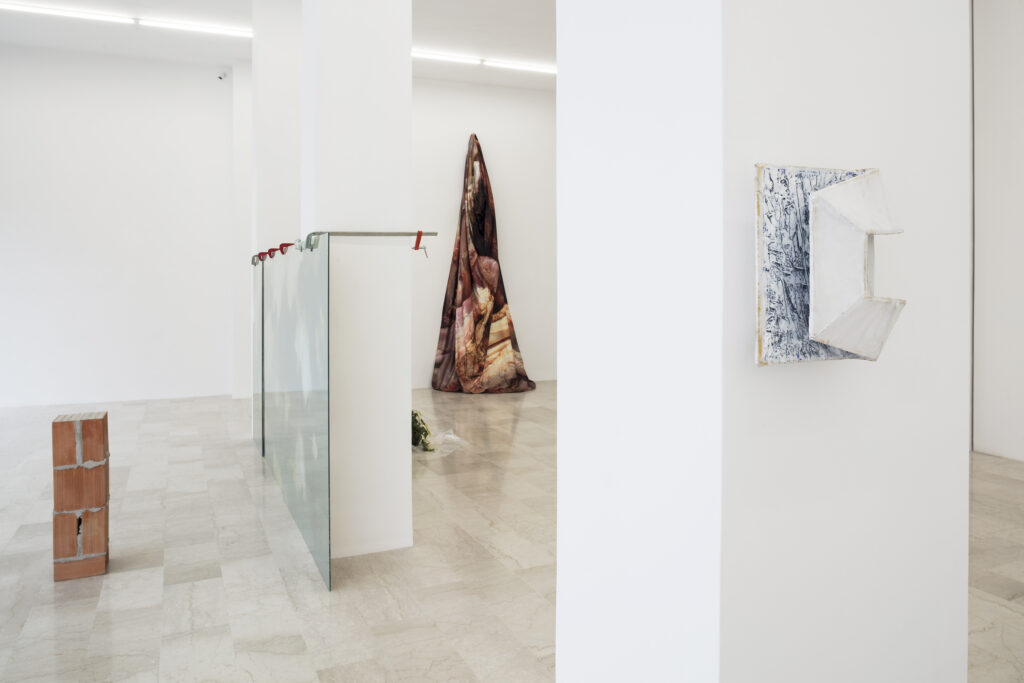
Shy no°1 2018
metal structure, acrylic on canvas
cm. 30 x 30 x 10
detail of the exhibition Meandering Routes: Distracted from the Destination
photography: Carlo Favero
Gallery P420 Bologna
Timido no°1 2018
struttura di metallo, acrilico su tela
cm. 30 x 30 x 10
dettaglio della Mostra Tragitti divaganti, distrazioni da una meta
fotografia: Carlo Favero
Galleria P420 Bologna
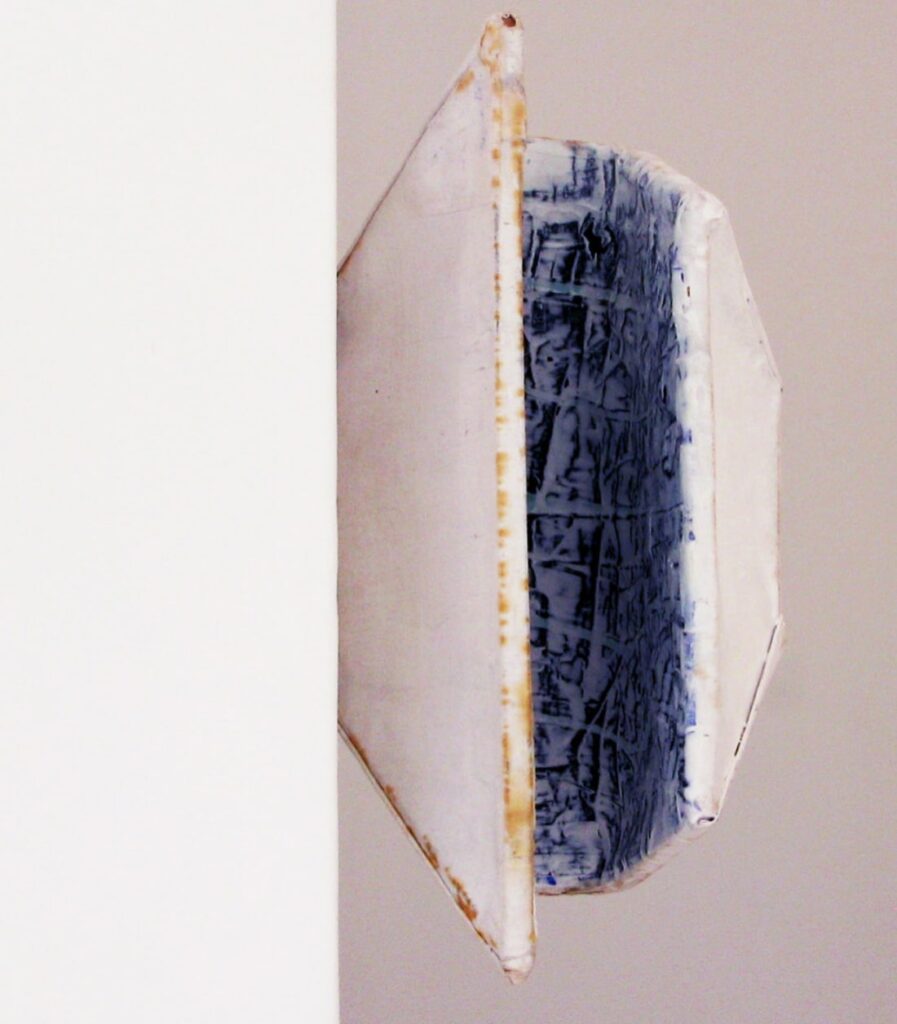
detail
Shy no°1 2018
metal structure, acrylic on canvas
cm. 30 x 30 x 10
Bologna
dettaglio
Timido no°1 2018
struttura di metallo, acrilico su tela
cm. 30 x 30 x 10
Bologna

untitled / folded paintings n°3 2018
welded metal frame, acrylic on canvas
cm. 50 x 55 x 42 Bologna
senza titolo / dipinti piegati n° 3 2018
telaio di metallo saldato, acrilico su tela
cm. 50 x 55 x 42 Bologna
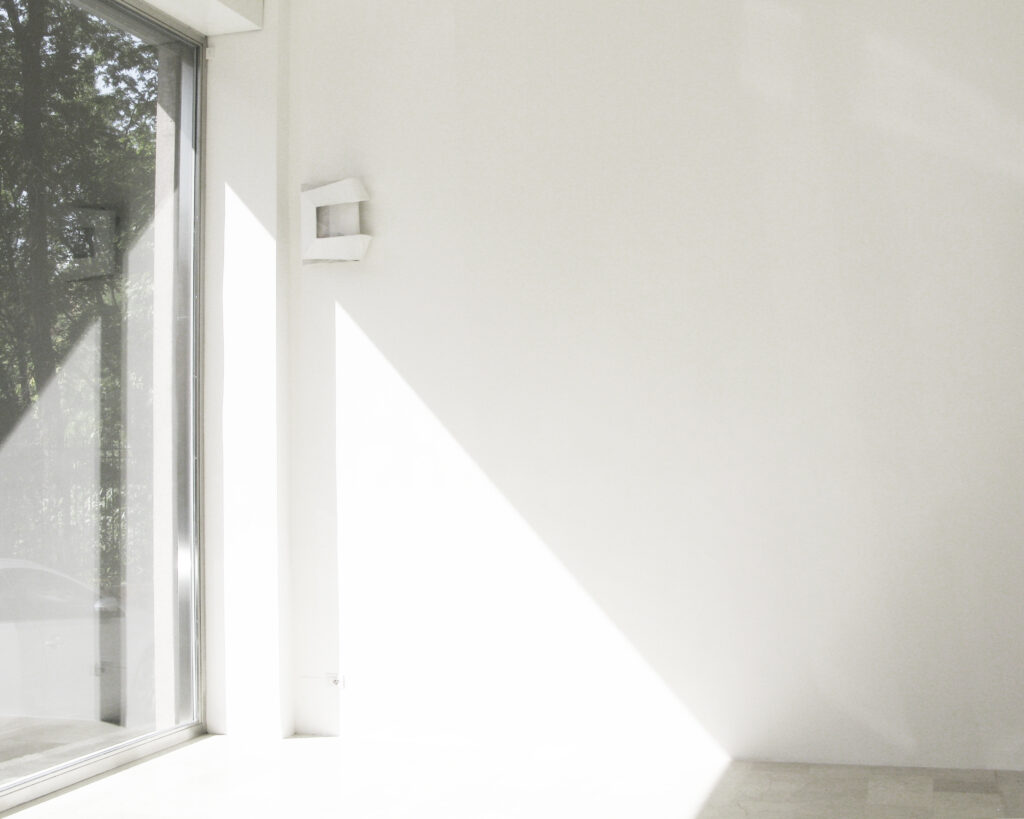
Introverted painting no° 1 2018
metal structure, acrylic on canvas
cm. 50 x 50 x 13
detail of the exhibition Meandering Routes: Distracted from the Destination
Gallery P420 Bologna
Dipinto introverso no° 1. 2018
struttura di metallo, acrilico su tela
cm. 50 x 50 x 13
dettaglio della Mostra Tragitti divaganti, distrazioni da una meta
Galleria P420 Bologna
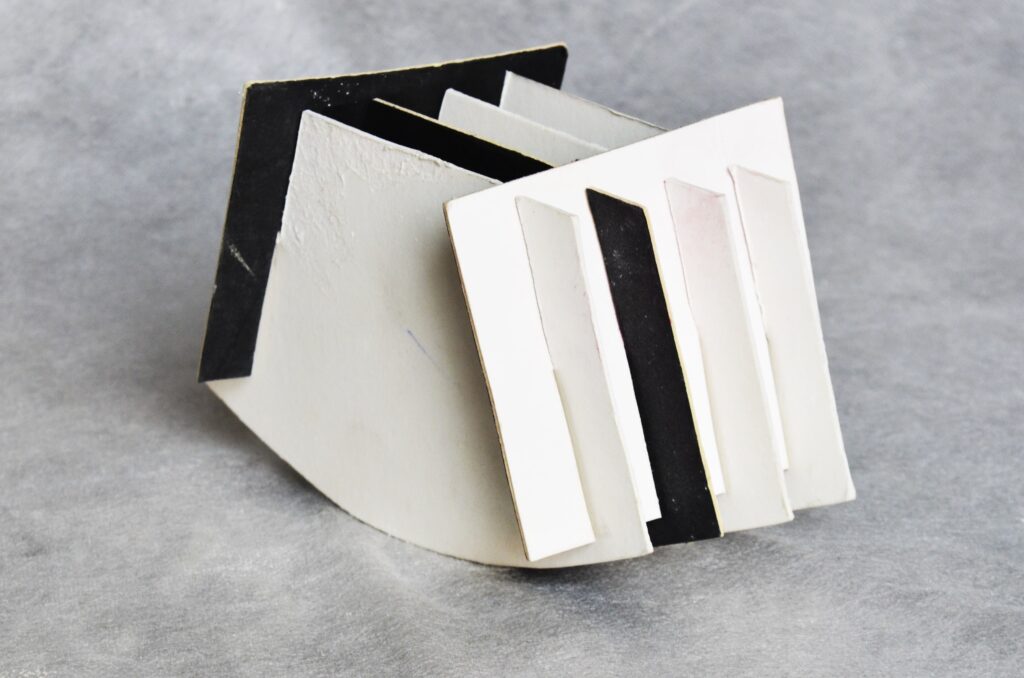
untitled balance room / paper model 2017
passepartout paper
cm. 9 x 12 x 15,5 Bologna
senza titolo stanza in bilico / modello di carta 2017
carta passepartout
cm. 9 x 12 x 15,5 Bologna
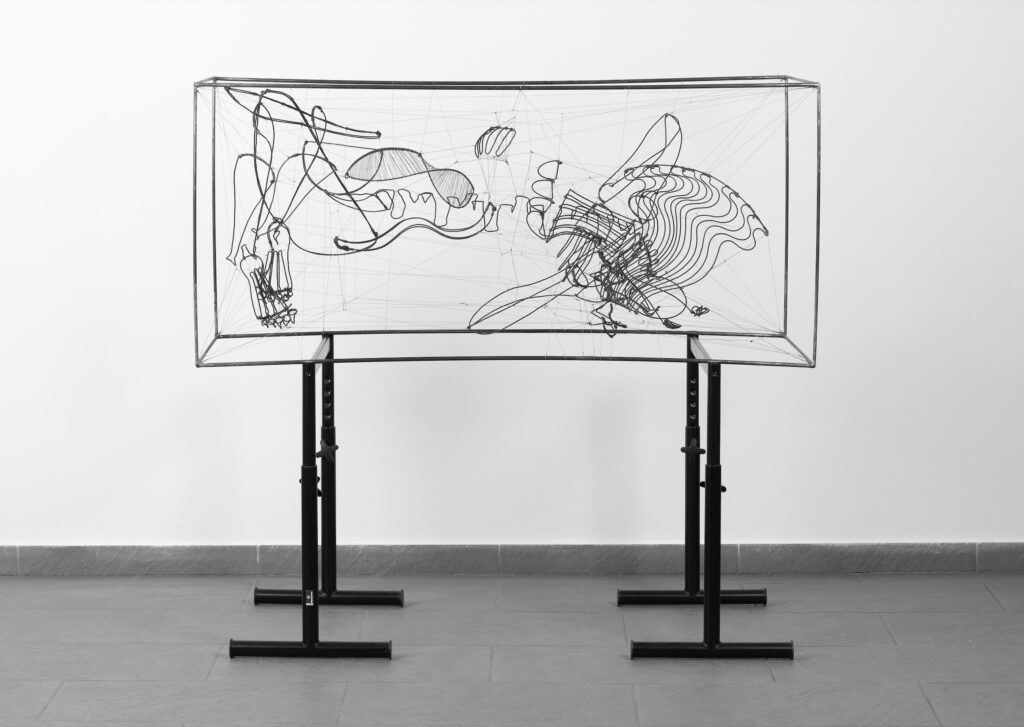
Venus 2016
weaved, welded wire structure
cm. 150 x 70 x 70
photography: Zsolt Hamarits
Budapest
Venere 2016
struttura di fil di ferro intrecciato, saldato
cm. 150 x 70 x 70
fotografia: Zsolt Hamarits
Budapest
© 2025 Kovács Mihály Mór